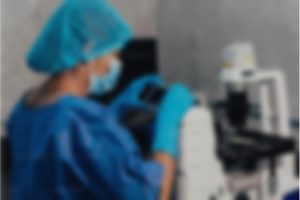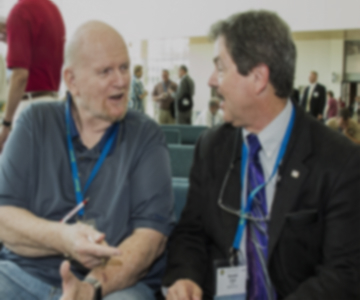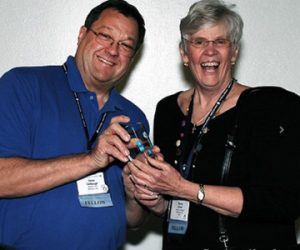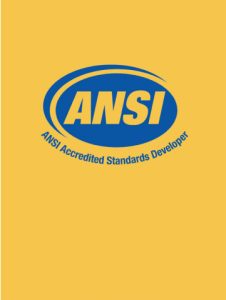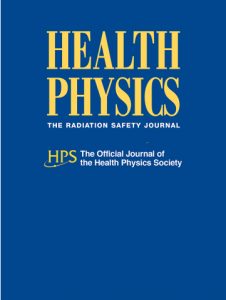As part of the Health Physics Society (HPS) Public Information Committee (PIC) initiative to document and celebrate the women of radiation protection, this section features exceptional HPS members and/or health physicists.
Here we thank, honor, and celebrate some remarkable women who are actively involved in the HPS and/or the health physics field, volunteering their expertise and time to serve our Society and our field the best way they can.
We celebrate all their achievements and remember their important work in the field.
If you know of a woman who deserves to be included here, contact the PIC.
Table of Contents
Sherry Adadi
Isaf Al-Nabulsi
Maia Avtandilashvili
Hattie Carwell
Yuiko Chino
Kelly Classic
Mychaela Coyne
Ämilie Degenhardt
Meghan Dieffenthaller
Sarah Donaher
Kathryn D. Held
Jordan Hillis
Ninni Jacob
Janet Johnson
Michelle B. Lee
Carolyn Jean MacKenzie
Dunstana R. Melo
Jillian Newmyer
Huitzilin Ortiz
Julianne Pollard-Larkin
Geena Quiñones
Lily Ranjbar
Caleigh Samuels
Lotem Buchbinder Shadur
Brooke Stagich
Sherry Adadi
Interview by Sara Dumit

Sherry Adadi
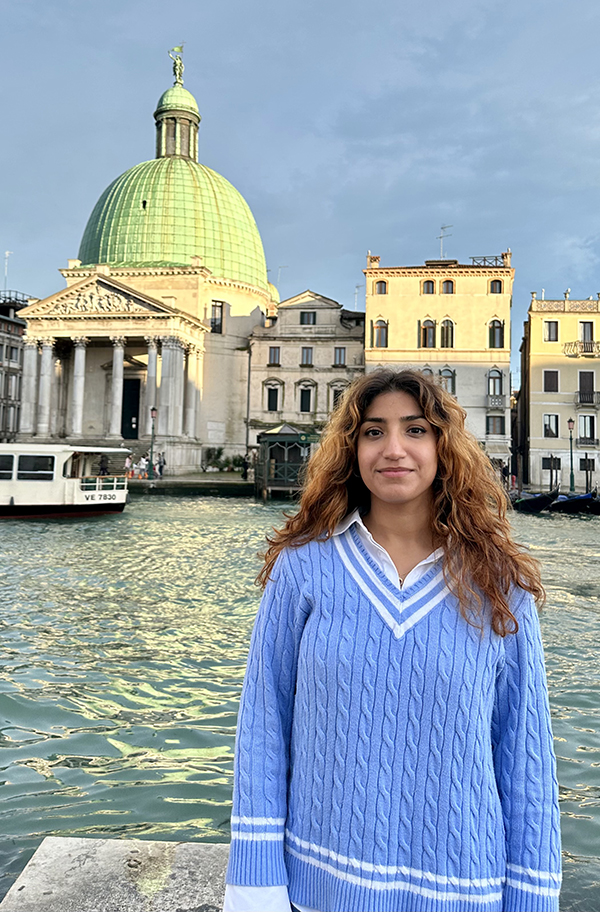
Sherry Adadi
Sherry Adadi is a second-year PhD student in the Georgia Institute of Technology NRE/MP Program at the Radiological Engineering, Detection, and Dosimetry (RED²) Laboratory. Her research is under Dr. Shaheen Dewji’s supervision, and in association with SLAC National Accelerator Laboratory’s Radiation Protection Group. Her work includes investigating radiation protection aspects of the LCLS-II-HE Cryomodule Test Facility at SLAC. This involves the characterization of the radiation source using advanced Monte Carlo methods and the design of radiation safety systems in order to mitigate the hazards from radiation produced during operation of the test facility. Additionally, she has collaborated on several projects related to radiation shielding analysis with scientists in the radiation protection department at SLAC.
Sherry graduated from Texas A&M University with a BS in nuclear engineering and a minor in radiological health engineering in May 2022. She was nominated as a Marie Skłodowska-Curie Fellow from the International Atomic energy Agency in 2022. Sherry is very passionate about encouraging young women to pursue careers in nuclear-related fields by volunteering through various advocacy activities. When not busy performing calculations with FLUKA software, she plays ultimate frisbee at Georgia Tech’s club ultimate frisbee team. Her research interests include advancements in radiation protection within high-energy physics and accelerator technologies.
Isaf Al-Nabulsi
Interview by Sara Dumit

Isaf Al-Nabulsi
Dr. Isaf Al-Nabulsi is a radiation scientist with nearly 40 years of experience in radiation health effects. Before retiring in 2023, Isaf served as the US Department of Energy (DOE) Japan Program manager for 11 years. She spent eight months on detail as a Science and Energy Program manager in the Office of Under Secretary for Energy and Innovation. She was the DOE program manager for the agency’s participation in the Study of One Million US Radiation Workers and Veterans for fewer than 2 years. She previously served as an acting director at the Office of Domestic and International Health Studies within the Office of Health and Safety, Office of Environment, Health, Safety and Security, and was responsible for managing and coordinating day-to-day activities associated with the domestic and international health studies, including ensuring that office activities comply with departmental regulations and law. Isaf also served as senior technical advisor, from 2012 to 2020, to the director of the Office of Health and Safety and provided advice on a wide range of topics related to the office’s mission. Prior to joining DOE, she worked at the National Council on Radiation Protection and Measurements and the National Research Council/National Academy of Sciences. She has more than 30 years of scientific research and technical program management experience. She represented DOE as a member of the Nuclear Energy Agency – Organisation for Economic Co-operation and Development High-Level Group on Low-Dose Radiation Research, Cancer Moonshot Database Working Group, and DOE ex officio representative to the National Biodefense Safety Board. She is a member of the Radiation Research Society, Health Physics Society, American Association for the Advancement of Science, and American Association for Cancer Research. Isaf has a doctorate degree in biomedicinal chemistry, a master’s degree in radiation sciences, and a bachelor’s degree in biology/biochemistry.
Maia Avtandilashvili
Interview by Sara Dumit

Maia Avtandilashvili
Dr. Maia Avtandilashvili is a nationally and an internationally recognized expert in radionuclide biokinetic modeling and internal dosimetry. Her research refines and validates the radiation dose assessment methods for actinide elements as the basis for reliable epidemiological studies, risk projection, and credible standards for radiological protection. Her expertise in biokinetic modeling is particularly critical to the field of health physics due to its importance to the assessment of internal radiation doses to workers and members of the general public.
Maia is a full member of the Health Physics Society (HPS) and a research assistant professor at the United States Transuranium and Uranium Registries (USTUR). Maia’s determination, resilience, and courage are inspirational—as she overcame many challenges while pursuing her dream to become a scientist.
Maia was born and raised in Tbilisi, the capital city of the Republic of Georgia, founded more than 15 centuries ago. She never had a doubt about who she wanted to be—a scientist—and later, when she started studying physics at school, a physicist. Maia was admitted to the physics department of Ivane Javakhishvili Tbilisi State University (TSU), the oldest and most respected higher-education institution in Georgia. In the third year, she chose to major in nuclear and particle physics and was offered a position of research assistant and, consequently, a graduate research project at TSU’s Radiocarbon and Low-level Radioactivity Laboratory (Radiocarbon Lab).
Maia graduated from TSU with a diploma (equivalent to an MS degree) with honors and continued working at TSU’s Radiocarbon Lab as a researcher. However, the huge political and economic changes due to disintegration of the Soviet Union drastically shifted the funding opportunities and priorities for science in Georgia. As a result, the funding for Maia’s graduate research was discontinued. However, she never quit pursuing her dream.

Maia Avtandilashvili on a research cruise, working for the IAEA.
In the 1990s, TSU’s Radiocarbon Lab became involved in research projects to study the effects of the Chernobyl accident on the environment. Between 1997 and 2002, Maia participated in the International Atomic Energy Agency’s (IAEA) regional project on radioactivity in the Black Sea marine environment. During this project, she was awarded an IAEA fellowship, designed specifically for her, for on-the-job training in environmental radioactivity measurements with several leading German research institutions (Institute for Radiation Protection, BfS, Berlin; Institute for Radiation Hygiene, BfS, Munich; Institute for Chemical Research, Freiburg; Institute for Hydrology, BfG, Koblenz; and Institute for Fishery Ecology, BFAFi, Hamburg). The most exciting part of her training was a research cruise on the North and Baltic Seas to collect the sediment and biological samples for radioactivity measurements.
In 2001, TSU’s Radiocarbon Lab established a long-term collaboration with the Health Physics Program at Idaho State University (ISU), and in 2006, Maia was offered a scholarship to pursue a PhD degree in health physics at ISU. Maia will always be grateful to Professor Rich Brey, who offered her this excellent opportunity to advance her career. While obtaining her PhD, she met Dr. Anthony (Tony) C. James, the USTUR director at that time, who became her PhD advisor and mentor. He interested her in internal dosimetry and the biokinetics of actinides. He was instrumental for Maia’s research in that she used the unique data from the USTUR to study long-term plutonium retention in the human respiratory tract. Sadly, Tony passed away just a few months prior to Maia’s PhD defense in 2011.
While at ISU, Maia was awarded the HPS Burton Moyer Fellowship for graduate studies. In addition, she received several HPS student travel grants that gave her an opportunity to attend the HPS annual meetings, present her research, and meet fellow health physicists. Maia is an active member of the HPS, as she is cofounder of the Georgian Health Physics Association (GHPA), an HPS chapter since 2007, and was a Program Committee member of the Columbia Chapter of the Health Physics Society (CCHPS) from 2017 to 2019.
After graduation from ISU, Maia joined the USTUR research team in Richland, Washington. The USTUR is the only tissue repository in the world that collects and preserves post-mortem tissue samples from workers in the US nuclear weapons complex. Maia is one of very few scientists with the knowledge, training, and skills required to maintain and evaluate this irreplaceable collection of samples required for further research on the effects of incorporated radioactive material. Maia’s research focuses on modeling of actinide biokinetics using this unique human data from former nuclear workers with accidental internal depositions of actinide elements. She is also responsible for management and population of the USTUR health physics database and has mentored graduate students and a postdoctoral researcher at the USTUR.
Maia’s work in the area of biokinetic modeling of actinide elements in humans has gained wide recognition among the international research community. She has been involved in international collaborative research projects with scientists from Karlsruhe Institute of Technology (Germany) and Public Health England (UK). In 2017, Maia was invited to become an associate member of the European Radiation Dosimetry Group (EURADOS) Working Group 7 on “Internal Dosimetry.”
Maia is actively involved as a subject-matter expert in the Million Person Study (MPS), the largest epidemiologic study of radiation exposure designed to evaluate radiation risks among healthy American workers and veterans. She serves on NCRP Scientific Committee (SC) 6-12 on development of models for brain dosimetry for internally deposited radionuclides. Maia also serves as an Editorial Board member of the journal Austin Biometrics and Biostatistics and as an ad hoc reviewer for several peer-reviewed journals, including Health Physics.
Maia has authored and coauthored numerous scientific articles in peer-reviewed journals including Health Physics, Radiation Protection Dosimetry, Journal of Radiological Protection, Radiation Research, Radiation and Environmental Biophysics, Radiocarbon, and various peer-reviewed abstracts in Health Physics. She has presented her research at numerous international and national conferences. Recently, she was an invited keynote speaker at the 12th International Conference on Health Effects of Incorporated Radionuclides, Fontenay-aux-Roses, France (2018), and was invited to give guest lectures on internal dosimetry and biokinetic modeling at Washington State University, Tri-Cities campus.
After almost 13 years of living in the United States on a nonresident status (starting with the student visa and, later, the H1-B work visa), Maia was granted permanent resident status in 2019. It was a challenging and exhausting experience to transition from a nonresident alien to a permanent resident status via the work-based immigration category. Maia’s immigration petition included reference letters from health physics experts from all around the world attesting to her expertise. Moreover, it included hundreds of pages showing evidence of her research’s value to the United States. Maia is grateful to everyone who supported her, especially Dr. Sergei Tolmachev, director of the USTUR. She is also thankful to the United States for recognizing her professional achievements and giving her the opportunity to pursue, permanently, an academic career in this great country.
We are fortunate to have such a brilliant member of the HPS and thank Maia for her scientific contributions and professional service to the health physics field!
Hattie Carwell
Interview by Sidni M. Moore, National Institutes of Health
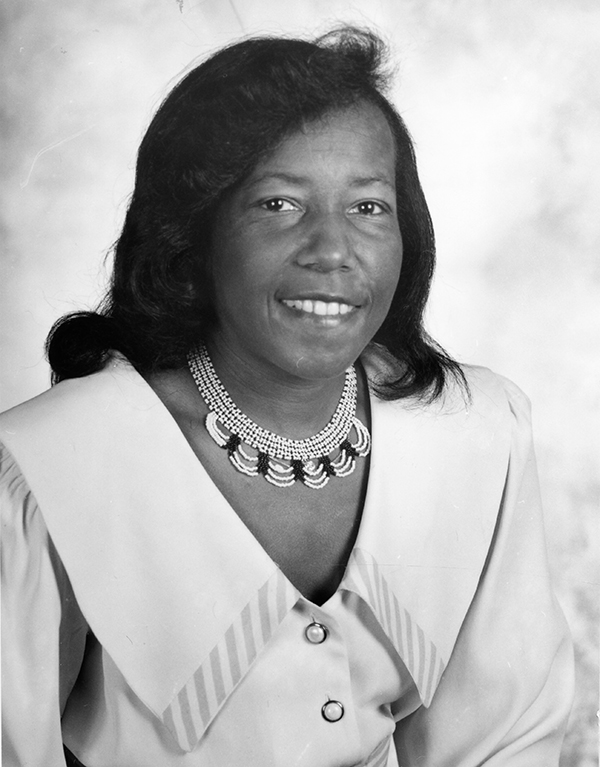
Hattie Carwell
Photo courtesy of AIP Emilio Segrè Visual Archives, Ronald E. Mickens Collection
It’s in the click of my heels,
The bend of my hair,
The palm of my hand,
The need for my care.
‘Cause I’m a woman
Phenomenally.
Phenomenal woman,
That’s me.
This excerpt from the late Maya Angelou’s poem “Phenomenal Woman” embodies Hattie Carwell’s effortless passion and dedication to health physics and minority progression. I knew she was someone I wanted to speak with, given her astonishing career and dedication to increasing minorities in radiation protection. On 10 October 2020, I interviewed Hattie. My first impression was that she is a very straightforward woman, and I did not want to disappoint her with typical questions. Over the course of two hours and 35 minutes, the conversation was infused with memories and advice that I wanted to share with you. This dedication and insight into Hattie’s career will allow you to comprehend why I call her “the phenomenal woman.”
Born in Brooklyn, New York, but raised in Ashland, Virginia, Hattie’s journey through health physics unearths public service and a dedication to increasing the number of talented young minority scientific professionals. Her journey begins at Bennett College, a historically black college/university, in Greensboro, North Carolina. Hattie earned a bachelor’s degree in chemistry and biology, which ignited her desire to pursue further education. She was given an opportunity for education in radiation protection with the possibility of having graduate record exams paid for. She applied to many schools with health physics programs and ultimately selected Rutgers University.
During her graduate studies, Hattie met Dr. Francis Haughey, late professor emeritus of health physics at Rutgers University and State University of New Jersey’s Cook College. Haughey encouraged Hattie to pursue health physics further through his kind and friendly nature, which was uncommon toward people of her race in the early 1970s. With his mentorship, Hattie focused her master’s thesis on the radiation exposure people received from the Hiroshima and Nagasaki bombs. Specifically, she questioned the uncertainty of the distance from the bomb, as that had a significant impact on the amount of radiation exposure people received. The thesis topic, though risky in nature, provided data later used to a large extent to determine acceptable radiation exposures. Hattie graduated from Rutgers University in 1971, one of only nine health physics students, the majority of whom were women.
After graduating from Rutgers, Hattie earned a post-graduate internship at Brookhaven National Laboratory (BNL), where she gained experience. However, due to a lack of diversity and BNL’s rural location, Hattie desired to further her pursuit of health physics in a more diverse setting that would also accommodate her love of travel. With this determination, she interviewed and later began a career working at Lawrence Livermore National Laboratory (LLNL) as a health physicist.
Working for the Department of Energy (DOE), Hattie made pathways that placed her in the top tier within health physics. Moreover, the experience allowed her to earn an opportunity to work at the International Atomic Energy Agency (IAEA) in nuclear safeguarding. Gaining the chance to work in Vienna did not come easy. As a black woman, she faced adversity from her peers, but that did not stop her from taking the opportunity to work for the IAEA in an area of health physics unknown to her. She said, “I was determined to gain a position there. I was already going on a trip to Kenya! So, I wrote a letter to someone who worked [at the IAEA], but I did not hear back … I took upon myself to find who this person is and showed them I am interested! I took a trip to Austria … I knew German, since I took a course in the language, and I found my way to the IAEA.” Those words alone show her determination and resilience in pursuing her passion.
With her everlasting willpower, Hattie earned a position in nuclear safeguards and worked at the IAEA for five years. Throughout those years, she not only traveled Europe, she joined several different professional groups to engage in her interests. Nonetheless, with the lack of the ability to volunteer within the local community, Hattie returned to DOE. Although the work environment there had changed so that those who were less dedicated to health physics were the ones who were promoted, Hattie persevered. The ability to travel and interact with other professionals in health physics gave Hattie the fuel to keep working endlessly to change that work environment for generations to come.
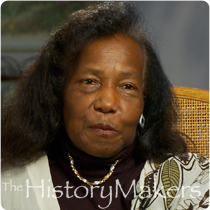
Hattie Carwell
Photo courtesy of The HistoryMakers
By the end of her career, Hattie became an expert in accelerator health physics and brought many operations in the national labs to the modern world, which increased their cost-effectiveness. Under her watch, Hattie created a safer work environment at her assigned locations, in which no fatality or serious incident occurred.
In addition to her amazing career in health physics, Hattie wrote a book in 1977, Blacks in Science: Astrophysicist to Zoologist, to present an exhaustive list of black inventors and the achievements of those who pursued careers in STEM (science, technology, engineering, and mathematics). She also created a national scholarship fund in 1983 for minority students. She cofounded the Museum of African American Technology Science Village, in Oakland, California, to collect and preserve African American achievements and create activities for local children. Hattie served on the National Technical Association board and the International Network on Appropriate Technology board and was president of the Northern California Council of Black Professional Engineers. She serves as the coordinator for the Coalition of Hispanic, African, and Native Americans for the Next Generation of Engineers and Scientists (CHANGES).
Hattie’s dedication to serving her community is her life achievement. Her initial goal was to create a minority women’s group within the Health Physics Society (HPS), but at that time the Society wasn’t ready to support her efforts. Nonetheless, she eventually succeeded in creating a minority women’s group in science, which has always been her active goal. Currently, she holds symposiums to bring black women together in science to discuss and celebrate successes. She has also expanded the list of African Americans in the Manhattan project to 26 (an increase since the 15 mentioned in Sidni Moore’s presentation at the 2020 HPS Virtual Meeting Diversity and Inclusion session).
Hattie Carwell is a true hidden figure within the health physics world. She is a leader to minority women across America. She dedicates her life to community service, encouraging minority students and early career professionals to pursue science and educating young children about the marvelous black and brown scientists who came before them. This is what a leader and woman of science is meant to do, and for that, we say, “Thank you, Hattie!”
Now you understand
Just why my head’s not bowed.
I don’t shout or jump about
Or have to talk real loud.
When you see me passing,
It ought to make you proud.
I say,
It’s in the click of my heels,
The bend of my hair,
the palm of my hand,
The need for my care.
‘Cause I’m a woman
Phenomenally.
Phenomenal woman,
That’s me.
–Excerpt from “Phenomenal Woman” by Maya Angelou, 1978
Want to learn more about Hattie Carwell? Check out The History Makers website.
Yuiko Chino
Interview by Sara Dumit
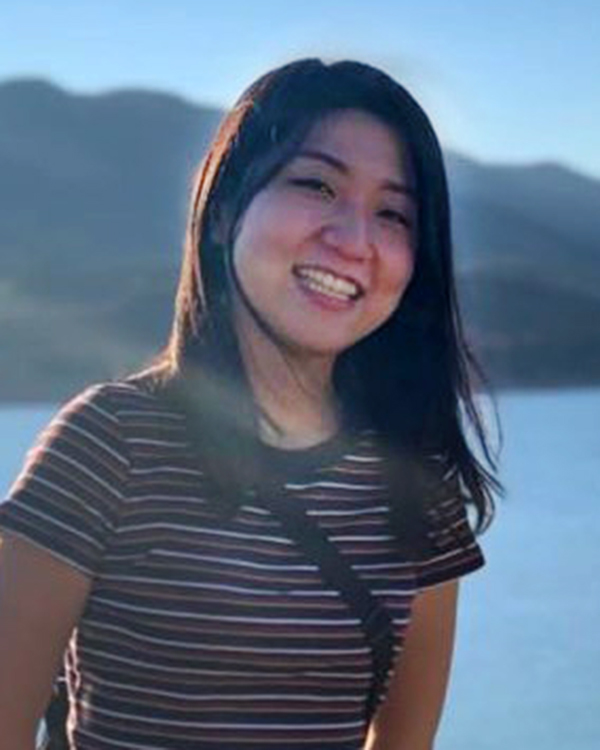
Yuiko Chino
Yuiko Chino is a PhD candidate in radiological health at Colorado State University. She is expected to graduate in the summer of 2023. Her current research deals with the longitudinal analysis of white blood cell count from rhesus monkeys receiving acute whole-body irradiation exposure. She holds a BS and MS in agricultural science from the Tokyo University of Agriculture and Technology, Japan, where she participated in a radioactive cesium monitoring project in the forest ecosystem of Fukushima after the nuclear accident.
Born and raised in Tokyo, Japan, Yuiko came to the United States of America in 2020 to pursue her PhD degree and became a student member of the Health Physics Society (HPS). She is the recipient of the prestigious 2021 Burton J. Moyer Memorial Fellowship of the HPS and also the 2022 F. Ward Whicker Scholarship of the HPS. “These awards helped me to continue my study and research in health physics,” she said. “I would like to thank the HPS for the opportunity to expand my field from just counting Cs-137 in fish and insects to the whole world of radiation safety. I hope one day to contribute to the understanding of the effect of radiation through experience and knowledge gained through my PhD education.”
Yuiko was awarded two HPS Travel Grants (2022 and 2021) and was a student worker at the last two HPS annual meetings. She is very interested in science communication and hopes to join the HPS Ask the Experts force in the future.
Kelly Classic
Interview by Emily Caffrey
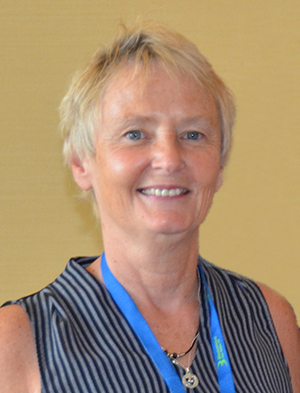
Kelly Classic
Women who are looking for a role model only need to look as far as Kelly Classic, CMHP, a well-known HPS member. Kelly’s surname aptly describes her as a person—she is indeed a classic in all areas of her professional and personal life.
Kelly’s contributions to the HPS and to the profession of health physics are so numerous that to give a complete picture it is necessary to refer you to a citation published in the Health Physics Journal following her receipt in 2009 of the Society’s Founders Award.
One of her most significant achievements was as the developer of the HPS-sponsored Radiation Answers.org website dedicated to public education. In this role, she used her greatest personal talent—that of being able to effectively communicate to the public. Kelly also was instrumental in the conception of the HPS Ask the Experts feature and was its associate editor for many years. She has been the face of the Society in so many ways.
Kelly served on the HPS Board of Directors for eight years as the recorder of the Board meeting minutes. She has been on numerous Society committees and has held many offices.
Kelly recently retired as the radiation safety manager at the Mayo Clinic in Rochester, Minnesota.
She was on the board of the local women’s shelter in Rochester, Minnesota, for nine years and was its interim executive director from November 2018 to September 2019. In addition, she bikes, runs, kayaks, and hikes and she loves good coffee.
Mychaela Coyne
Interview by Sara Dumit

Mychaela Coyne
Dr. Mychaela Coyne is an assistant professor at Indiana University (IU) in Indianapolis, Indiana. Her research is in utilizing 3D printing for radiation therapy treatments, including developing a quality assurance program for printing in radiation therapy. She also provides clinical support to IU Health as a medical physicist at Simon Cancer Center and is actively involved with the Purdue University School of Health Sciences.
Mychaela first joined the Health Physics Society (HPS) as a nuclear engineering student at the University of Florida. A Nuclear Regulatory Commission graduate fellowship allowed her to complete an MS in health physics from Purdue University, where she continued with her PhD in medical physics. Following a clinical residency at the University of Colorado, she returned to Indiana. Her dual appointment with Indiana University-Purdue University Indianapolis allows her to teach the physics students at Purdue in the IU clinic.
When asked what made her decide to pursue a medical physics degree, she answered: “Clinical experience was pivotal in my decision to pursue a medical physics degree. I now get to use my health physics knowledge to uphold radiation safety principles for patients and staff.”
Mychaela was honored as the student winner of the Lutz Moritz Award of the HPS Accelerator Section in 2016 due to her research work on an in vivo neutron activation analysis system to determine sodium and calcium concentrations in human bone. She is an experienced public speaker and has participated in several science communication competitions, such as “3 Minute Thesis,” where the contestants are challenged to summarize their dissertations and explain their research projects’ significance in three minutes and using only one presentation slide. In 2019, she won the silver medal at the MedPhys Slam – Art of Science Communication competition with her presentation titled “A New Way to Measure Sodium.” Recently, she was an invited panelist, alongside renowned experts in the field, at Purdue University’s Atoms for Humanity – What if Nuclear Innovation Could Change the World? breakout session “Next Gen Nuclear: Medicine and Health.” When asked what the key is to being a great public speaker and science communicator, she answered promptly, “Tell yourself every day ‘I am a great public speaker!’ and practice, practice, practice!”
Mychaela is an active member of the Hoosier Chapter of the HPS and encourages anyone with an interest in health or medical physics to reach out to her on LinkedIn with questions.
Ämilie Degenhardt
Interview by Sara Dumit
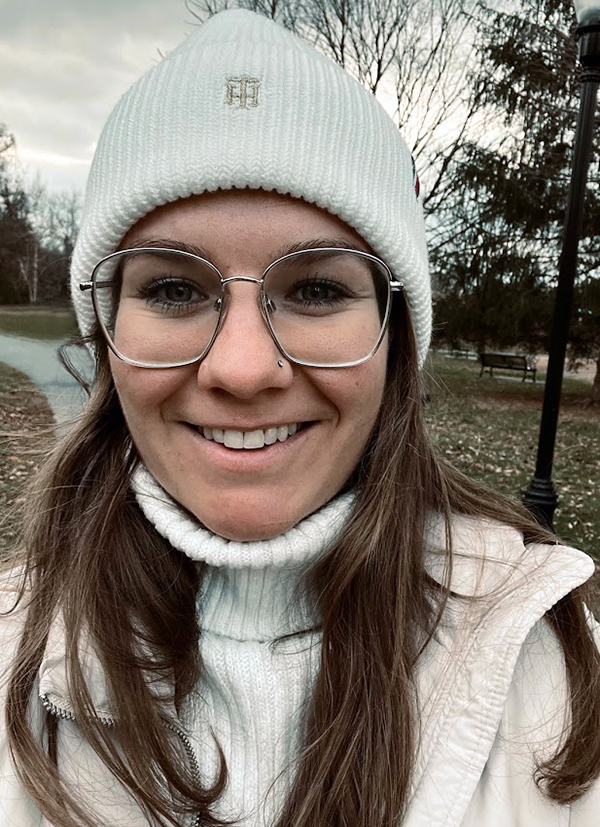
Ämilie Degenhardt
Dr. Ämilie Degenhardt has a PhD in radiation biophysics and is an early career researcher at the German Federal Office for Radiation Protection (BfS) in the frame of the RadoNorm project. She is the chairperson of the RadoNorm Early Career Researcher Council and a member-mentee of the International Commission on Radiological Protection (ICRP) Task Group 121.
When asked about her journey as a radiation biophysicist, she answered very wisely that “people usually know little about all the ‘NOs’ we have received, the battles we have fought, and the effort we have made to reach our career goals.” Ämilie’s scientific journey in the health physics field shows us an example of resilience, perseverance, and bravery.
Ämilie comes from a small town in the south of Brazil called Mafra. In 2009, she started her bachelor’s degree in technology of radiology at the Technological Federal University of Paraná (UTFPR – Curitiba, Brazil). Although it was a happy moment to start her studies at one of the best universities in Brazil, she was sadly facing a recurrent eating disorder: anorexia. Thankfully, with the support of doctors, mental health professionals, family and friends—and also having to focus on the exciting challenge of achieving high-distinction grades, making new friends, and experiencing the university environment—Ämilie was able to successfully overcome the eating disorder while falling in love with radiation physics. Immediately in her first semester, where all the specialties in radiology were introduced, she knew that nuclear medicine was the path she wanted to take.
In 2010, during a university event called “Radiology Journey” (a seasonal event of the Technology of Radiology course), Ämilie heard for the first time about the master’s and doctoral programs offered by the Brazilian National Commission for Nuclear Energy in partnership with federal universities. It immediately caught her attention, especially the program offered by the Institute for Radiation Protection and Dosimetry (IRD). However, it looked like a dream hard to achieve, because IRD was located in another city, Rio de Janeiro—an expensive and big city, with a very competitive selection process for candidates (which all seemed challenging for her). Ämilie knew that the only solution would be to apply for a scholarship to alleviate the financial burden. She kept that desire to further her education with a master’s degree at the bottom of her heart and moved on with concluding her bachelor’s studies.
Ämilie started an internship in nuclear medicine and was excited to continue to work in the field upon graduation. However, when she finally graduated, the documents needed to work as a radiology professional took much longer to be issued than expected, which negatively impacted her ability to be hired by the nuclear medicine clinic at which she interned. Although Ämilie was sad about the door that was closed, she refused to simply stop and instead tried another door.
Thus, she decided to take an exam and obtain a Radiation Protection Supervisor in Nuclear Medicine certification by the Brazilian National Commission for Nuclear Energy. It was in 2013 when Ämilie flew for the first time to Rio de Janeiro to take the certification exam. Two months prior to her travel—determined to raise the money needed to cover travel expenses, she began tutoring high school students in physics, mathematics, and chemistry. The certification exam was divided in two parts. Ämilie succeeded in the first part of the exam, resulting in the need for another flight to Rio de Janeiro to take the second part. Unfortunately, she did not reach the score needed to get the certification. However, she was more acquainted with the city and with IRD’s research opportunities. She therefore decided to apply for the master of science program in radiation biophysics at the IRD.
In March of 2014, Ämilie was successfully awarded a full scholarship and started her master’s degree in radiation biophysics at the IRD, focusing on internal dosimetry in nuclear medicine. Ämilie was absolutely thrilled—her dream came true! Despite living her dream, it did not prevent her from receiving more “NOs” in her career. Her supervisor wanted her to study in a partner institute in France (for two months); however, she did not receive the travel grant, so she was unable to go. Additionally, she faced numerous challenges with her research project, and it underwent many changes (partially due to the lack of time and money) so that she could finish her research work by the deadline. Thankfully, in March of 2016, Ämilie obtained her master’s degree: Master of Science in Radiation Biophysics at the IRD.
Ämilie started to teach radiology technicians in a school, and it was one of the best experiences she had. Most of the students were interested in the lectures and activities that Ämilie proposed. But once again, she was faced with challenges. Being a woman in her mid-20s caused some older male students not to want her as their teacher—they even complained to the course coordinator, saying that Ämilie was “too young” to teach them. Thankfully, the coordinator stood by Ämilie’s side and told them that she had a master’s degree and was more than capable to be a teacher. This experience shocked Ämilie because she had never faced such prejudice before. At the end of that semester, the students changed their minds about her and acknowledged that Ämilie was indeed a capable teacher despite her age. She reflects with sadness that despite living in the 21st century, many women still face such unfortunate prejudiced situations over factors they cannot control, such as their age and being a woman.
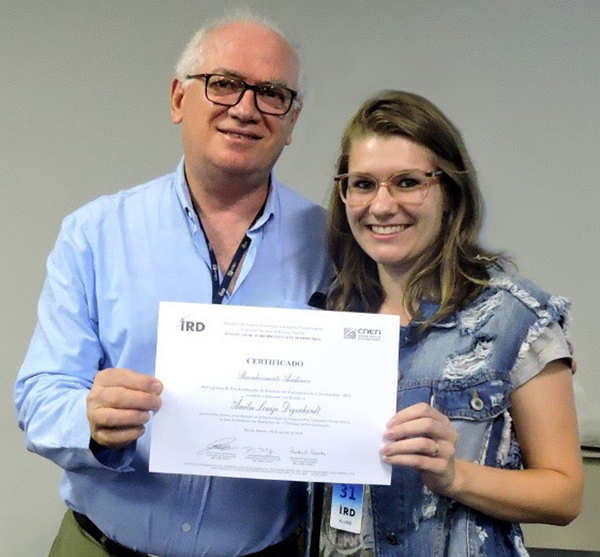
The dean of IRD (left) and Ämilie, whose PhD work was awarded the best study on radiation biophysics at the IRD, Brazil, in 2018
At the end of 2016, Ämilie decided to leave her job as a teacher and focus on doing more scientific research—she was really missing it. Therefore, in 2017 she started her PhD work (with a full scholarship) in the same institute (IRD) where she got her master’s degree, and in the same field, radiation biophysics. Ämilie’s research project was on internal dosimetry in prompt response to emergency situations—she considers it one of her greatest professional achievements so far. However, once again she faced a big “NO.” During her PhD studies, she was supposed to participate in an exchange program at the University of Cincinnati in the United States; however, Ämilie was not able to get a scholarship to go. Thus, even though she had the acceptance letter from the university, she had no financial means to go. In March 2021, Ämilie successfully defended her PhD thesis and it was highly regarded by IRD’s senior researchers and also by researchers from other institutes. Her research work was awarded national and international prizes, she published three papers, and she had the opportunity to present her research results in Lisbon, Portugal.
After concluding her PhD degree, Ämilie was looking for a job in internal dosimetry. She sent numerous emails to many researchers in the field asking for opportunities. Some answered her, informing her that sadly there was no open position in their groups or that they did not have the financial means to hire. Some simply did not reply at all. Although Ämilie was a bit discouraged, she did not quit. She applied for many positions around the world and finally, in April, she received the great news that her application was shortlisted, and she would have an interview in the beginning of May. Ämilie spent the whole month getting ready for the interview—she was excited (and a bit anxious). Immediately after the interview, Ämilie thought that she was unsuccessful and would not be the one selected for the position. Thankfully, she was wrong! Two weeks after the interview, Ämilie’s current boss (Dr. Augusto Giussani) informed her that she was successfully selected to the early career researcher (post-doctoral) position at the BfS in the frame of the RadoNorm project!

Ämilie in Germany. The background painting on the wall shows Marie Curie and Albert Einstein.
Ämilie had three months to prepare everything and move from Brazil to Germany (Munich). On 1 September 2021, she started working at BfS. It was quite challenging to move to another country, especially during the novel coronavirus pandemic, not to mention having to learn a new language. Ämilie remembers all these challenges with a big smile on her face, saying that it has been such an amazing journey professionally and also a time of beautiful personal growth. At BfS, Ämilie is currently developing a biokinetic model to assess doses to a fetus/embryo due to radon intakes by the mother. In a short period of time, she has already presented her research in Germany, Hungary, and Canada.
In December of 2021, Ämilie found out about the ICRP Mentorship Program and the opportunity to join Task Group 121 (Effects of Ionising Radiation Exposure in Offspring and Next Generations) as a member-mentee. She applied for the position and was selected. She is working alongside renowned radiation protection experts from around the world, contributing to the dosimetry portion of the work. She was also recently selected to be the chairperson of the RadoNorm Early Career Researcher Council in Europe.
Ämilie wishes to share with all who would read this: “We will face many ‘NOs’ in our career and life in general, in particular us, who have a simple background and come from developing countries. For us, women, it can be even more challenging. Opportunities are indeed not equal for all of us. But do not stop. Keep pushing; we can do it! At the end of this beautiful journey called life, we will look back and be sure that it was all worth it!” She learned from a colleague in radiology and a friend in life that “nobody grows alone. Let’s fight for all of us and hold the doors open so that everybody can find their right place.”
Ämilie concludes her interview by reading a poem that she wrote about her love for Science and Poetry:
The Poem of Science and Poetry
To the lovers of Science that came before me, to my masters that inspired me to love her, to those women that fought for my rights to explore her, and for those that fight for her in such time like this
Inside of me two things are never silent
Something called curiosity
It does not find easily satiety
And a poetry affair… (shh!) but be quiet
Body and soul for passion shout out
Science answers with more newness
And poetry to the soul brings caress
To the days, life and light they bring out
Poetry nourished the heart
While Science brings purpose
When they meet, adventurous
Two faces of the same being, art
Meghan Dieffenthaller
Meghan Dieffenthaller
Meghan Dieffenthaller is a health physicist with the Radiation Emergency Assistance Center/Training Site (REAC/TS) in Oak Ridge, Tennessee. In this role, she trains emergency responders, healthcare providers, and radiation workers in medical response to radiation emergencies, both domestically and abroad. She also provides dose estimation capabilities for their 24/7 emergency call line, consulting on events such as overexposures, lost sources, medical facility mishaps, and internalized radionuclides. Prior to joining REAC/TS, she worked as a health physicist for the Dose Reconstruction Program conducted by the National Institute for Occupational Safety and Health (NIOSH). She has publications in the Health Physics Journal, CBRNe World Magazine, and The Biological Bulletin and has presented at the 68th and 69th HPS Annual Meetings. She is also currently on the Program Committee for HPS annual meetings.
Meghan is a mother of three children four years old and younger and is passionate about speaking to other women in science about the joys and challenges of being a both a mother and a scientist.
Meghan received her BS in biology from the University of Dallas and an MS in radiological health with a health physics concentration from Colorado State University.
Posted 19 March 2025
Sarah Donaher
Interview by Sara Dumit

Sarah Donaher
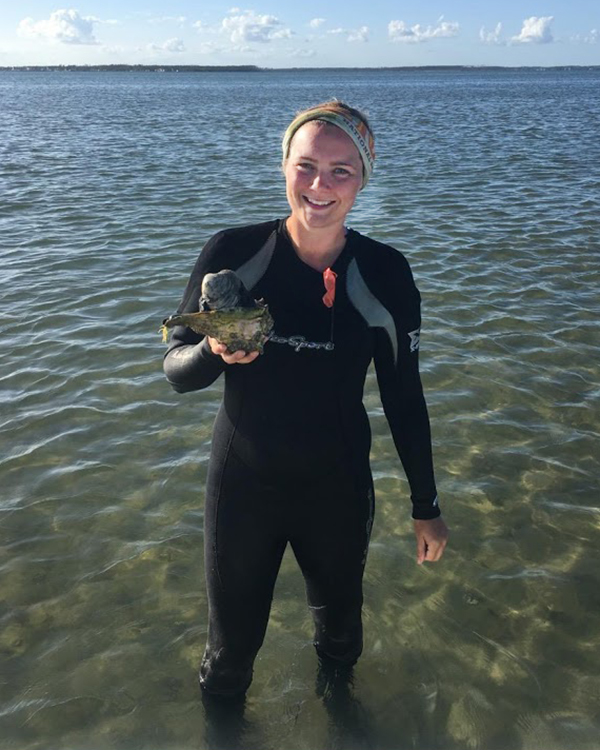
Sarah Donaher during a field study in the seagrass beds of the Outer Banks in North Carolina, holding a whelk consuming a clam
Sarah is currently a PhD candidate in environmental engineering at Clemson University. Her dissertation is supported by the US Navy and involves investigating the uptake and effects of radium in shellfish. The project will ensure adequate protection of marine biota from potential coastal contamination of the radium paint that had widespread commercial and military uses in the early 20th century. She recently published a paper examining the bioavailability of dissolved radium to marine mussels in Environmental Science and Technology.
Sarah graduated with her bachelor’s degree in environmental engineering from Clemson University in 2017 and was awarded a National Science Foundation Graduate Research Fellowship to pursue her master’s in marine science at the University of North Carolina (UNC) at Chapel Hill. Her master’s thesis investigated the independent and interacting effects of plant-animal mutualisms and human-caused disturbances in seagrass meadows. This research was honored with UNC’s Impact Award for graduate research with direct benefits to North Carolina citizens. While at Chapel Hill, Sarah enjoyed participating in several outreach programs including Girls in Engineering, Science, and Technology and the Scientific Research and Education Network.
After defending her master’s in 2020, these positive service-learning experiences encouraged Sarah to accept a six-month AmeriCorps term as a Montana Conservation Fellow. She was placed with the Bureau of Land Management as a civil engineering intern and worked on various projects, including the design and implementation of fish barriers to maintain the genetic integrity of local trout populations. The personal and professional opportunities gained from her time in Montana have influenced her philosophy as a civic leader and an academic, and she hopes to someday move back to that area of the country.
After her AmeriCorps term, Sarah returned to Clemson to continue her graduate studies. She joined the lab of Dr. Nicole Martinez, with whom Sarah had previously worked during her time as an undergraduate on a research study examining the uptake of plutonium in corn (this study was recently published in Health Physics; DOI: 10.1097/HP.0000000000001638). Last year, Sarah was invited as a member of the International Commission on Radiological Protection Task Group 125. The primary goal of the task group is to determine if and how ecosystem services might be incorporated into the current scheme of environmental radiological protection.
Sarah was honored as the recipient of the prestigious 2022 Richard J. Burk, Jr., Fellowship of the Health Physics Society. She said: “This fellowship was a huge honor, and I am so grateful that my work can contribute to the Health Physics Society’s goal of promoting robust radiological science and holistic environmental protection. I am particularly thankful this fellowship gave me the opportunity to attend the 67th Annual Meeting in Spokane; this conference was greatly beneficial to my professional development, and I enjoyed meeting more researchers and professionals in my field and presenting my own work to a target audience.”
Sarah hopes to work for an international or national lab after she graduates and to continue health physics research at the intersection of ecology, engineering, and education. Outside of work, she enjoys hiking, training agility with her dog Murphy, and spending time with her family.
Kathryn D. Held
Interview by Sara Dumit
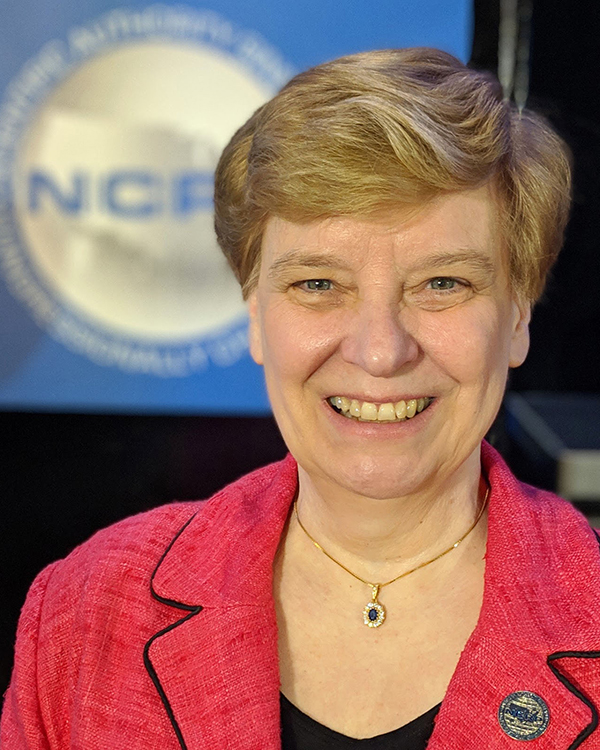
Kathryn D. Held
Dr. Kathryn D. Held is president of the National Council on Radiation Protection and Measurements (NCRP), a position she assumed in January 2019 after being NCRP executive director and chief science officer from 2016 to 2018. She had served on the NCRP Board of Directors and as vice president of Program Area Committee 1 on Basic Criteria, Epidemiology, Radiobiology, and Risk. She also served as chair of the Program Committee for the 2011 Annual Meeting, as a member of NCRP Scientific Committee (SC) 1-22 on Radiation Protection for Astronauts in Short-Term Missions and Phase I of SC 1-24 on Radiation Exposures in Space and the Potential of Central Nervous System Effects, and as an advisor to several other NCRP committees. She has participated as a speaker in several Health Physics Society (HPS) meetings, including being a 2022 G. William Morgan Lecturer.
Kathryn is an associate radiation biologist in the Department of Radiation Oncology at Massachusetts General Hospital (MGH) and associate professor of Radiation Oncology (Radiation Biology) at Harvard Medical School (HMS). Her lab research has involved studies of molecular mechanisms for the induction of bystander effects by high energy particles in cells and tissues, characterization of charged particle beam induced DNA damage responses and cell killing, and mechanisms for regulation of DNA damage response by cell-cell communication. She also teaches radiation biology to radiation oncology medical and physics residents and graduate students at MGH/HMS as well as teaching and giving invited lectures at other universities and medical centers around the world.
Kathryn earned her PhD in biology from the University of Texas, Austin. She has served on review panels and advisory boards for numerous federal agencies including the National Institutes of Health, the National Aeronautics and Space Administration (NASA), and the US Army Medical Research and Material Command programs and other organizations such as the Radiological Society of North America and the American Board of Radiology. She is on the Editorial Boards of Radiation Research and the International Journal of Radiation Biology and has served on committees for the National Academy of Science/National Research Council, NASA, and the American Society of Radiation Oncology. She is a past president of the Radiation Research Society (2009).
Jordan Hillis
Interview by Sara Dumit
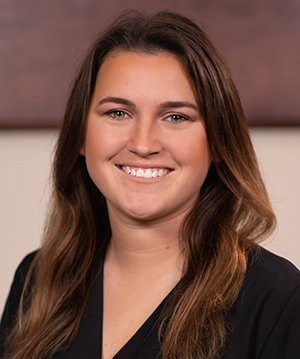
Jordan Hillis
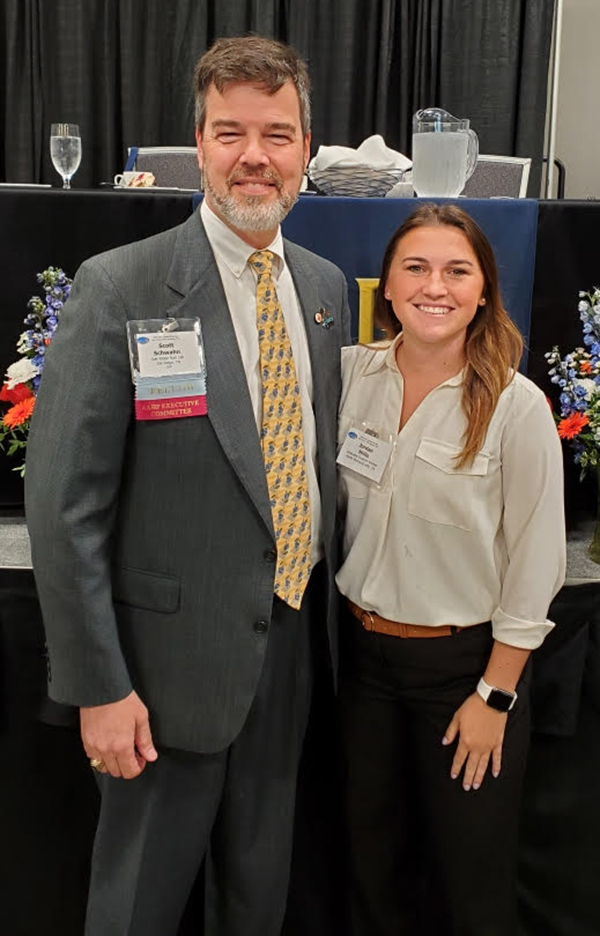
Dr. Scott O. Schwahn (left) and Jordan Hillis

Jordan Hillis at the 2022 HPS Annual Meeting in Spokane, Washington
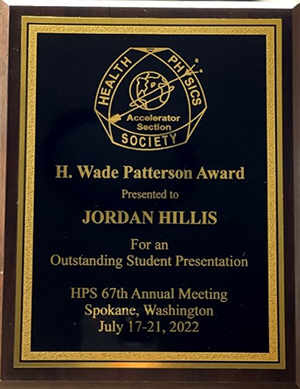
H. Wade Patterson Memorial Award Plaque conferred upon Jordan Hillis
Jordan Hillis is Texas born and raised but has dreams and aspirations even bigger than the state itself. Those dreams led her to Texas A&M University in College Station, Texas, in 2016. Jordan always knew she wanted to work in the engineering field and incorporate human interaction through some kind of medicine. Texas A&M opened her eyes to the field of nuclear engineering, compiling both of her core interests into one. Nuclear engineering offered Jordan the opportunity for nuclear medicine, health physics, radiation detection, and dosimetry. This gave Jordan an opportunity of a lifetime that she never knew she would have. As an early-career health physicist and PhD student, she has an impressive background and a very bright future ahead!
During Jordan’s undergraduate academic endeavors, she was also a member of the Corps of Cadets at Texas A&M in the unit Squadron 2, Gator 2. The Corps of Cadets fueled Jordan’s love for tradition, daily challenges, a disciplined lifestyle, and personal growth. Throughout her four-year Corps experience, Jordan held multiple leadership positions, including vice president of the Cadet Performance Review Board, platoon leader for her unit, and recruiting officer for her unit. She was also a member of the Corps of Cadets women’s soccer team. At the end of Jordan’s Corps experience, she received the Certificate in Applied Ethical Leadership from the Hollingsworth Center for Ethical Leadership.
Jordan received her bachelor of science degree in nuclear engineering from Texas A&M in May of 2021. That summer she interned at Oak Ridge National Laboratory (ORNL) at the Spallation Neutron Source. At ORNL she was treated as an equal by her mentor (Dr. Scott O. Schwahn) and the director of the nuclear and radiological protection division (Mike Stafford). This was an experience where Jordan got to utilize her classroom-based didactic knowledge in real-world applications to solve a critical problem. Her work involved investigating the contamination of beryllium-7 in the accelerator tunnel and determining a new respective removable surface contamination value.
The work Jordan conducted throughout the summer was then presented at the 67th Health Physics Society (HPS) Annual Meeting in 2022 in Spokane, Washington. At the conference, she was awarded the H. Wade Patterson Memorial Award in the Accelerator Section—an immense honor! As a young woman wanting to blaze her own trail and be seen as a colleague amongst a crowd of hundreds of professionals, Jordan was overwhelmed with feelings of gratitude and accomplishment.
Jordan’s ambitions and enthusiasm didn’t stop there. She went right back to Texas A&M in the fall of 2021 to pursue a master of science in nuclear engineering. However, after outlining her research project, she quickly realized she had greater aspirations to pursue a PhD degree instead. As of March 2023, Jordan has successfully transitioned from a master’s degree to a doctorate under her advisor Dr. Craig Marianno. Her dissertation work, the Rhisotope Project, focuses on developing a method of deterrence to save the rapidly declining rhinoceros population in South Africa due to poaching. Working with Witts University (Dr. James Larkin) in South Africa, this method consists of employing a radiation source in the rhinoceros’ horn to devalue the horn and allow it to be detectable by portal monitors when being exported to various countries. Jordan believes that through health physics she has found a unique way to leave an impact on the world. In 2026, she is projected to earn her PhD in nuclear engineering specializing in health physics from Texas A&M.
During Jordan’s time in graduate school, she also restarted and became president of the HPS student branch within the Nuclear Engineering Department at Texas A&M University to share her passion with other students. She is also an active member of Texas A&M’s Center for Nuclear Security Science and Policy Initiatives (NSSPI). In 2023, Jordan traveled with NSSPI to Japan to visit their nuclear fuel cycle facilities and learn from the nuclear safeguard practitioners. She has also traveled to nine countries in Europe and hopes to revisit them with NSSPI to tour the European nuclear facilities before she graduates.
In a short period of time, Jordan has received multiple internship and employment offers and has chosen to go to Nevada National Security Site Mission Support Test Services for the summer of 2023. Upon graduation in 2026, she says: “The world is vast and so are my dreams. I will go wherever my heart feels is right and wherever I feel challenged to be the best health physicist I can be.” Jordan concludes this interview by saying, “As a woman trying to blaze my own trail in the health physics field, I hope to inspire future generations of women that they are more than capable of doing the same.”
During her free time, Jordan enjoys running (she completed her first half marathon in February of 2023), hiking, and traveling. We are so lucky to have Jordan as a future leader in the health physics field!
Ninni Jacob
Interview by Sara Dumit
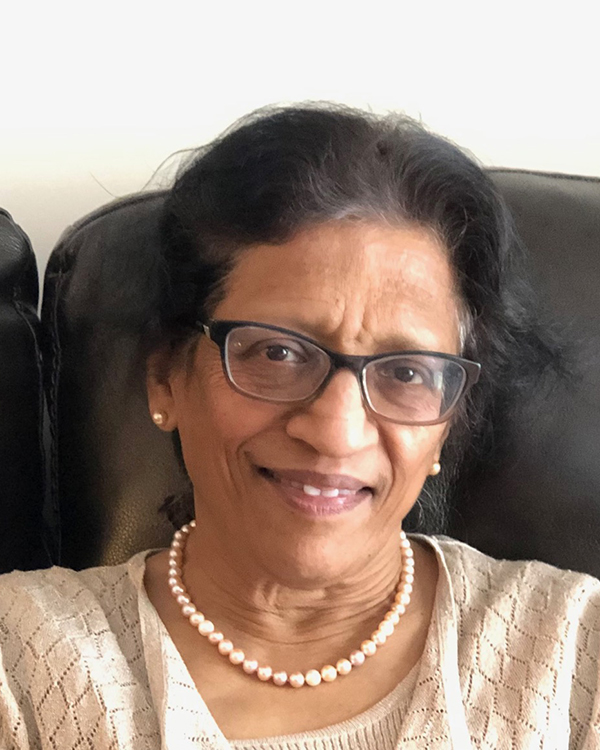
Ninni Jacob
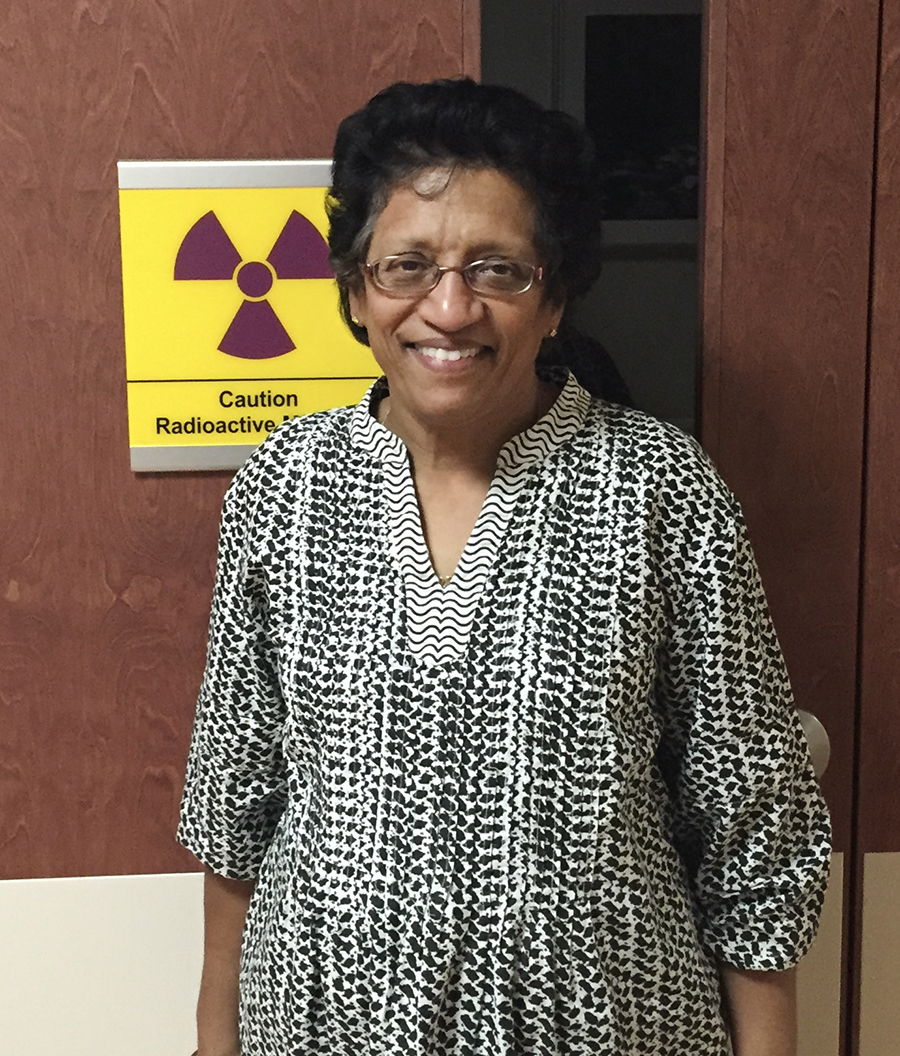
Ninni Jacob
Ninni Jacob, MS, CHP, is an accomplished radiation safety professional and a certified health physicist with many years of expertise in most areas of health physics, having worked with academic, research, and medical institutions and with research reactors. She was the radiation safety officer (RSO) on five radioactive material licenses: at the University of Rhode Island (RI), RI Nuclear Science Center, Brown University, Rhode Island Hospital, and retired at the Veteran Affairs Medical Center in Albany, New York. Her specialties include administration of radioactive material and x-ray licenses, radiation detection and monitoring, radiation safety education, nuclear medicine quality assurance, patient dose calculations and instructions, writing radioactive material license applications, auditing of licensees, gamma spectroscopy, waste management, decommissioning, emergency response, and laser safety.
Ninni’s key accomplishments include running five successful radiation safety programs in full compliance with applicable state and federal regulations; developing laser safety programs, including policy and procedure, credentialing, safety training, and inspections; developing a fluoroscopy credentialing program for physicians and follow-up for patients; and developing radiation risk language for human subject research and clinical trials. She also played a key role on task forces and teams, including the Radiation Dose Reduction Task Force Disaster Preparedness Team.
Ninni has always been strongly involved with the Health Physics Society (HPS) and other societies. An emeritus member of the HPS, Ninni joined the Society in 1981. She served on the Board of Directors and as president and president-elect of the Medical Section (2009–2014) and was a member of the Executive Board of the RSO Section (2002–2005). She was on the Board of Directors of the New England Chapter (1995–2003), serving as president in 2001–2002. She was a member of the Symposia Committee (1996–1998) and was Local Arrangements Committee chair for the annual meeting in Providence, Rhode Island (2005–2006).
Ninni was an HPS delegate to the 11th Congress of the International Radiation Protection Association (IRPA) in Madrid, Spain, in May 2004 and an HPS delegate to the 13th IRPA Congress in Glasgow, United Kingdom in May 2012. She was also Member of the working group that prepared the ANSI/HPS N13.49-2001 Technical Standard “Performance and Documentation of Radiological Surveys.”
In addition, Ninni served as president of Campus Radiation Safety Officers (1999–2003) and as a member of the AAHP Part 2 Panel (2019–2022).
Ninni was born in Kerala, India. “This is the geographical location that is referred to in most health physics textbooks where the background levels of radiation are higher than normal,” she explained. “This is because the beach sand is rich in monazite (thorium compounds). I wonder if that is what led me to be a health physicist.”
Ninni grew up in Bangalore, the so-called “Silicon Valley of India.” She attended college in Madras (now Chennai) and graduated with a BS and then an MS in physics from Madras Christian College. She then taught physics at Madras Christian College and Women’s Christian College, Madras. “Following our Indian custom, my parents arranged my marriage, and I accompanied my husband, James Jacob, to the USA (Hanover, New Hampshire), where he was doing a post-doctoral fellowship,” Ninni said. “While at Dartmouth, I volunteered at Mary Hitchcock Memorial Hospital in the radiation therapy department. This is what led to my career in health physics. We subsequently moved to Purdue University where I received my master’s in health physics in 1981. There I had the privilege of being under the tutelage of Paul Ziemer and Richard Vetter, and thus started my long career in health physics.”
You can learn more about Ninni’s background and work in health physics in a February 2023 interview in the “RSO Interview” series of the Health Physics Journal (Health Physics 84(2):p S6-S8, February 2003).
When asked what she considers important in health physics, Ninni answered: “1. Educating the general public about radiation is very important. The HPS has an excellent Science Teacher Workshop program, which can be used with your local science teachers. If you get an opportunity to visit the schools, speak to the students about radiation. Get involved with science fair projects. Do not pass up the opportunity of speaking with community groups about radiation. That way you can put radiation risks in perspective, eliminate the paranoia, and dispel the myths that the public holds about radiation. And 2. Mentoring women to advance in health physics.”
Ninni’s daughter, a physician and director of an HIV clinic, lives in New Jersey with her husband, who is in charge of the nonprofit division of Verizon helping high schools, and children. Ninni’s son is an attorney for the City of San Francisco. He and his wife, who works in an environmentally conscious investment firm, settled in Oakland, California. Ninni has four grandchildren who are her pride and joy and now that she is retired, she likes to spend time with them. Her hobbies include cooking, gardening, and entertaining. She is a master gardener, and she is involved with a community garden. She also graduated from a Food Recovery course at the University of Rhode Island and volunteers for that program. She is active in the church, where her husband is the minister. She was a mentor for a program called “Education for Ministry” for several years and is involved with Bible studies and outreach ministry. Ninni is a notable woman in health physics.
Janet Johnson
Interview by Emily Caffrey
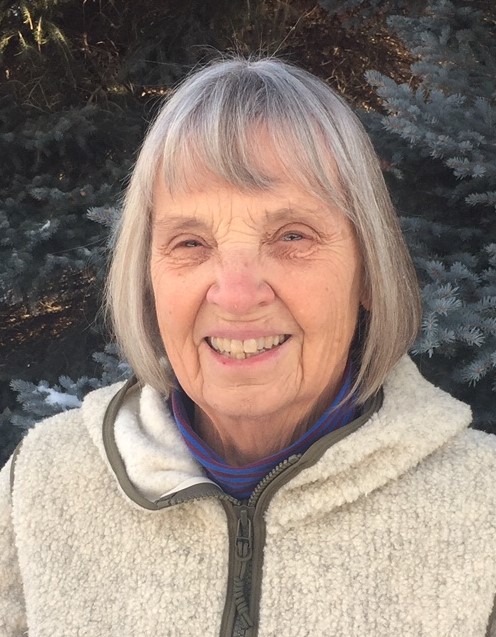
Janet Johnson
Throughout Dr. Janet Johnson’s long professional career in health physics she has demonstrated exceptional selflessness and effective service to both the HPS and the profession. This service includes teaching and mentoring of students and young professionals; the dedicated practice of radiation protection for workers, the public, and the environment; and government and community service on radiation protection advisory boards and citizen stakeholder groups.
Jan received her BS in chemistry from the University of Massachusetts in 1958 and began her work in health physics as an Atomic Energy Commission Fellow at the University of Rochester, receiving her MS in 1959. She received her PhD in microbiology and environmental health from Colorado State University in 1986. She is also a certified health physicist.
For 14 years, Jan taught in the Colorado State University radiological health program. It was in this role that many first met Jan. She was the person to whom students went with their questions, knowing that her answers would be clear and delivered with patience, support, and good humor. Jan has continued to mentor and support many health physicists throughout their professional careers.
Jan’s effectiveness and expertise have been recognized by both her professional peers and the larger community. She has served on the HPS Board of Directors, as president of the Central Rocky Mountain Chapter of the HPS, and as a member and officer on the HPS Nominating Committee, Public Education Committee, Radon Section, and Environmental/Radon Section. She was a faculty member for the 2009 summer school on naturally occurring radioactive material and coauthored the textbook chapter on uranium recovery. She was the 2013 recipient of the HPS Founders Award.
If that wasn’t enough, Jan has also chaired the Radiation Advisory Committee of the Environmental Protection Agency Science Advisory Board and served on the National Academy of Sciences Committee on Low-Level Radioactive Waste Siting for New York State, the Colorado Radiation Advisory Committee, the Colorado Hazardous Waste Commission, the Governor’s Rocky Flats Scientific Panel on Monitoring, and the National Council on Radiation Protection and Measurements (NCRP) Scientific Committee 64-22, which updated the NCRP report on environmental surveillance.
Jan has been involved in the uranium production industry as a radiation safety officer for many decades. When introducing herself to a group of uranium recovery workers Jan sometimes says, “I am old; I’ve been doing this for over 50 years.” She continues to do so with integrity, patience, humility, and a desire to serve.
Michelle B. Lee
Interview by Sara Dumit

Michelle B. Lee

Michelle with her mentees at LANL

Michelle having fun while teaching her students at a S3TEM event

Michelle with K–12 students at the Young and Excellent S3TEM event in Albuquerque, New Mexico
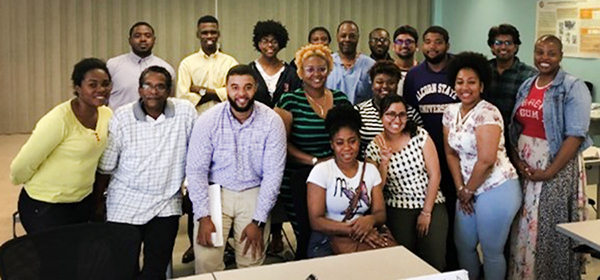
Michelle with her students who participated in the inaugural RPCI program at Alcorn State University, Lorman Mississippi
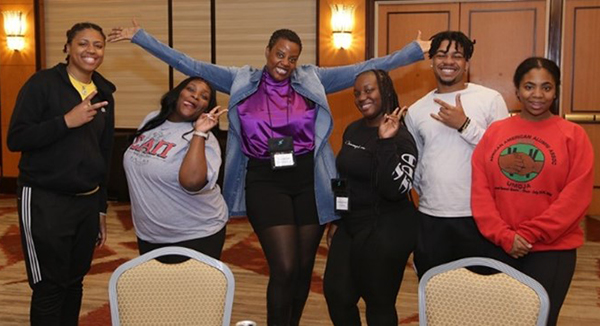
Michelle with her former (on left) and future (on right) RPCI students at the Seventh Annual S3TEM Workshop, Atlanta, Georgia
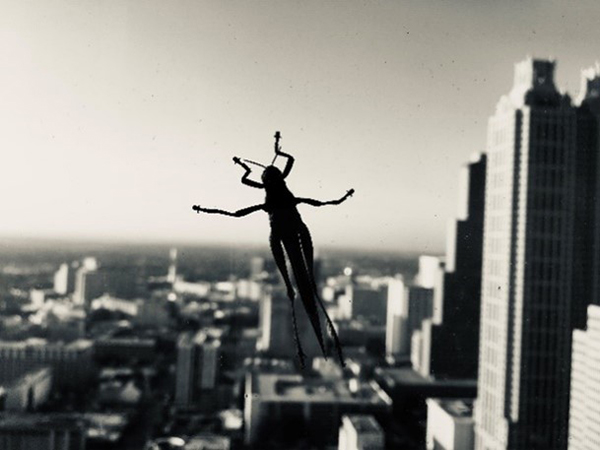
Michelle’s photography archive (Skyscraper Grasshopper), copyright Michelle B. Lee
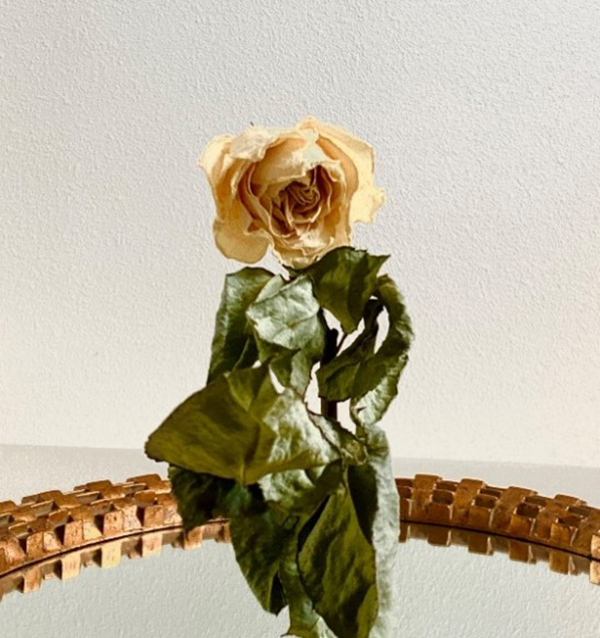
Michelle’s photography archive (Adorned Rose), copyright Michelle B. Lee
Dr. Michelle B. Lee, PhD, is a health physicist working at Los Alamos National Laboratory (LANL) supporting National Security Enterprise (NSE) projects at Nevada National Security Site in Mercury, Nevada. She has over 28 years of experience in providing radiation protection facilitation for a breadth of research and nuclear stockpile activities. Michelle is not only a strong leader and advocate for students and workers in science, technology, engineering, and mathematics (STEM) fields who are underrepresented such as women, immigrants, and Black and Brown populations, but is also an expert in recruitment and retention efforts. Michelle’s endeavors to open doors and support minorities in the radiation protection field are impressive. She leads a critical need to meet national industry standards and mission-related goals. Read along to be encouraged and inspired!
Through the Historical Black Colleges and Universities (HBCU) program, Michelle, a Grambling State University physics major, came to LANL in 1991 as an undergraduate intern working in the Material Science Technology (MST) division. She worked for MST during the summer of 1992 and year-round in 1993 until going to graduate school at Colorado State University on a Department of Energy (DOE) health physics fellowship in 1994. After earning her MS degree in radiological health sciences, Michelle returned to LANL as a graduate research assistant (GRA) in 1996 where she began her career in radiation protection. In 1998, she was successfully selected to join a PhD program at the University of New Mexico while working full-time as a GRA. After earning her PhD degree in health education, Michelle accepted a full-time technical staff member position with LANL in 2004. In addition to providing radiological support to operational, programmatic, and mission-critical work at LANL, Michelle always had a passion to engage in diversity efforts by actively participating in employee resource groups, laboratory recruitment, and mentoring students.
In 2006, Michelle conducted a study and was able to determine why the recruitment rate of Black employees was so low at LANL. She found that one of the reasons had to do with New Mexico State itself. The state only has a 2.7% Black population in a linguistically diverse, majority Hispanic population as a minority-majority. Michelle initiates numerous efforts to attract Black and Brown professionals to LANL, which includes recruitment from HBCUs, other Minority Serving Institutions (MSIs) such as Hispanic Serving Institutions (HSI), Native American Serving Non-Tribal Institutions (NASNTI), and Tribal Colleges or Universities (TCU) located in New Mexico and across the nation.
When asked what the key is to recruiting and retaining underrepresented students and workers in the health physics field, she answered, “To see themselves reflected in one of the most influential and important national industry-critical fields that serve our intellectual capacities, health, safety, environment, and public well-being.”
In 2015, Michelle received a great honor—she was selected to serve as the principal investigator (PI) for the National Nuclear Security Administration funded Minority Serving Institution Partnership Program (MSIPP), which is like the predecessor HBCU program that pipelined her into an employee status at LANL 24 years earlier! Under Michelle’s leadership, each year LANL offers internships for underrepresented minorities in STEM fields. She also implemented two programs, which she created, to aid in the NSE workforce minority student pipeline called Soft Skills for STEM (S3TEM) and the Radiation Protection Careers Initiative (RPCI).
The S3TEM is a professional development program started for STEM majors to increase their awareness of the importance of soft skills in the workplace. The RPCI provides an overview of radiation protection concepts and applications, with the intent to influence students to pursue a career in radiation protection. It also prepares students to work as entry-level radiation control technicians (RCTs).
Michelle’s accomplishments as the MSIPP PI include supporting over 130 LANL student internships; providing soft skills training via the S3TEM program to over 700 K–12 students, college students, and professionals; and awarding 80 students DOE-RCT training certificates, in which 35% of the awardees are working in the industry. When asked how she feels about being able to give so much back to underrepresented minorities and seeing her mentees succeeding as health physicists, Michelle answered with joy: “My work began from having an opportunity. I consider my contributions as giving back to communities of people who would not otherwise find the appropriate connections to fulfill their brilliance and skills by positively impacting society. I have a responsibility to add value back into the workforce.”
Michelle joined the Health Physics Society as a graduate student in 1994, participating in many annual and midyear meetings as a presenter. Michelle considers herself a humanitarian, and her pastimes include traveling and photography.
Carolyn Jean MacKenzie
Interview by Sara Dumit
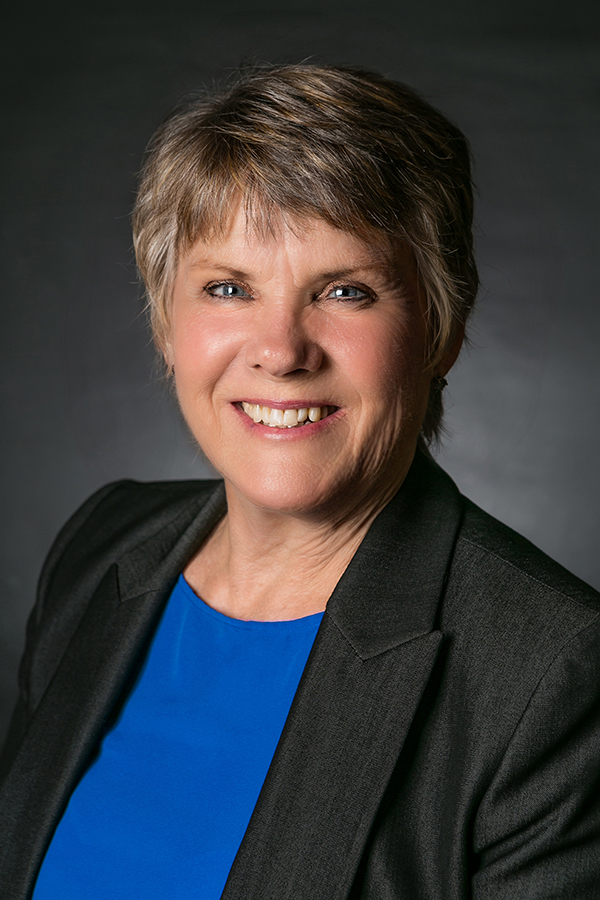
Carolyn MacKenzie

Carolyn locating orphan sources in the Republic of Georgia
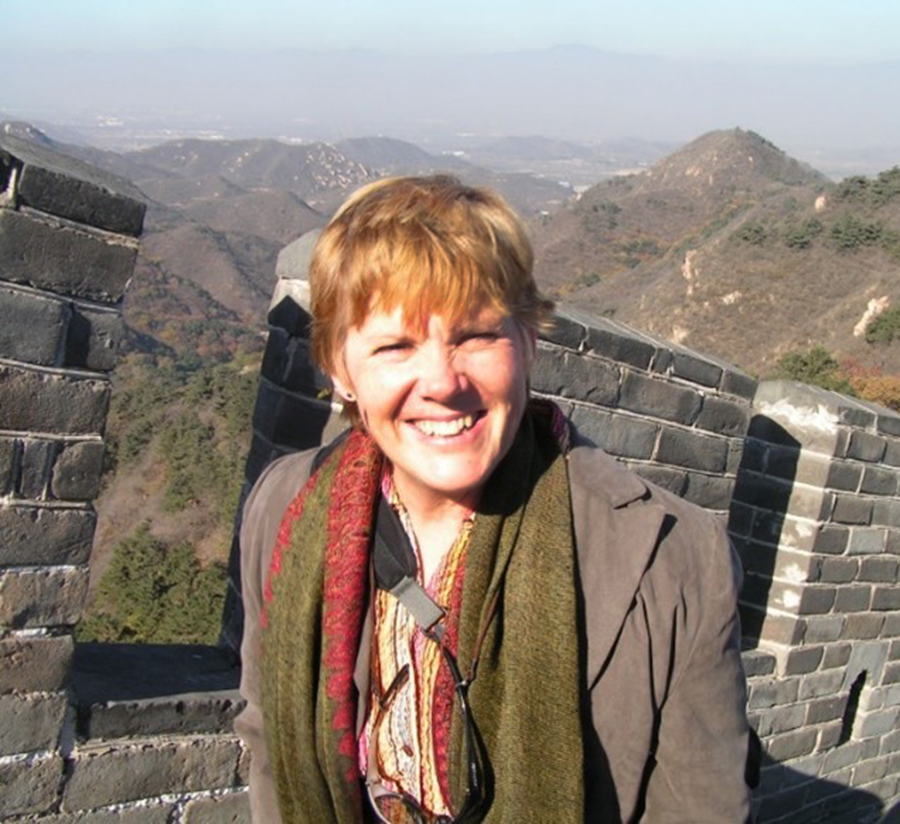
Carolyn teaching in China
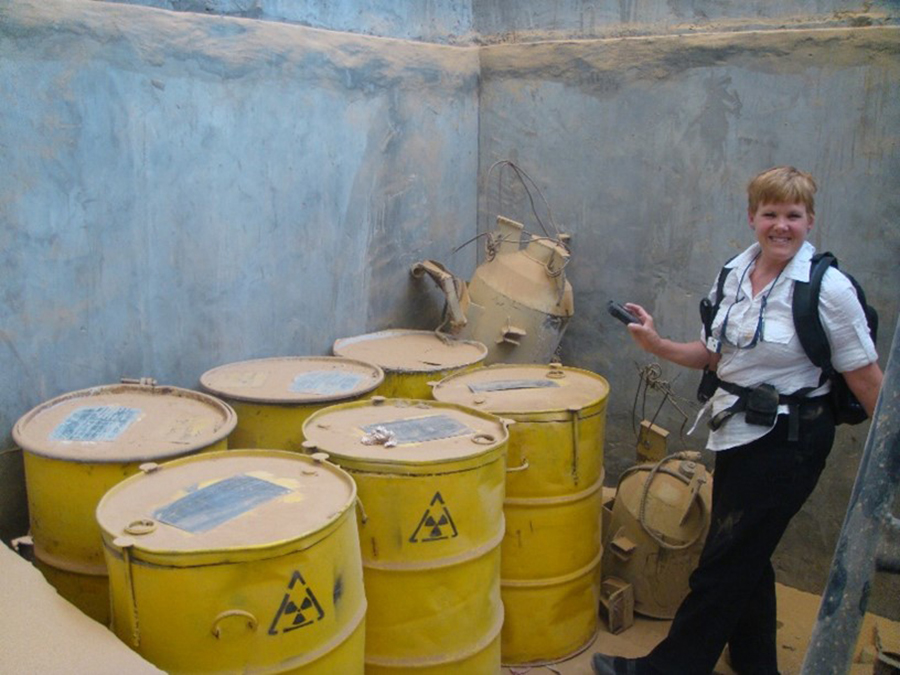
Carolyn locating sources in Jordan

Carolyn working in Burkina Faso
Carolyn Jean MacKenzie, CHP Emeritus, is the president of the American Academy of Health Physics (AAHP), corecipient of the Nobel Peace Prize (jointly awarded to the International Atomic Energy Agency’s [IAEA] Director General and staff in 2005), and consultant to the National Nuclear Security Administration (NNSA). Carolyn is an experienced health physicist with a demonstrated history of working in the research industry at Lawrence Livermore National Laboratory (LLNL) and the University of California, Berkeley (UCB) and in nuclear security (NNSA, IAEA). Carolyn has a master of science in biophysics from the University of California, Davis (UCD). She is highly skilled in radiation safety, health physics, government relations, and emergency management, with unique expertise in orphan sources, source security, and alternative technologies. Carolyn is an inspiration and a role model!
When asked how she entered the health physics field, she answered candidly: “I sort of fell into health physics. It was never my plan and I had never heard of the profession.” When Carolyn graduated from college at UCD with a bachelor’s degree in zoology, she was originally hoping to become a wildlife biologist. She has always had an adventurous nature and halfway through her undergraduate years, she had taken a couple of years off and backpacked across Africa, India, and the Middle East with her partner, visiting 27 countries by the age of 21! Now having completed her four-year degree, she needed a job to help pay off those student loans she had accrued. However, wildlife biologist jobs were not readily available.
Carolyn got a nighttime research assistant job at UCD working at a cyclotron in a hot lab making radiopharmaceuticals (thallium-201 and iodine-123, which were experimental new drugs at the time) during the middle of the night and trucking them down to the bay area universities and hospitals for experimental use in the morning. There were many men working at the cyclotron but only three women: the receptionist, the bookkeeper, and Carolyn in the hot lab. Much to her surprise, she ended up enjoying her job. However, Carolyn was receiving large radiation doses in her hands (as she was handling curie quantities of these radionuclides in a glove box by using the glove portals, not remote manipulators) and the state regulator was threatening to shut the lab down. Carolyn worked with the principal investigator in the hot lab to design a robotic radioisotope handling system and a xenon gas stack monitoring system so they could quantitate the releases of radioactive xenon gases.
Carolyn quickly figured out that the health physics staff were working daytime hours and were getting paid better, so as soon as there was an opening for the accelerator health physicist job, she applied—and was selected for the position. She went back to school while working full-time and completed her MS in biophysics and AAHP board certification. She interviewed for the UCD radiation safety officer (RSO) position when she was nine months pregnant with her second child, which she says was “a bit odd, but they still gave me the job!” Carolyn only had five weeks of maternity leave with both of her children. In hindsight, she says she wishes she had more time, but that was not much of an option then. She looks back on those years as “the crazy busy years, but I was determined that I was going to do it.”
After working 14 years at UCD, Carolyn decided to pursue new work challenges. She worked in biotechnology for several years as an environmental health & safety director and then took a health physicist job with LLNL. She worked at the lab in a variety of capacities and eventually received the opportunity to work in Russia with the Russian military on the removal of radioisotope thermoelectric generators (RTGs) in Kamchatka, Sakhalin, and the Arctic Circle. Carolyn’s team was replacing the RTGs with solar to power lighthouses. She was the only woman on the team, and the Russian soldiers initially laughed at having a woman join them on this mission. By the end of her trip, they were working well together, and they allowed Carolyn to always approach the RTG first. Only once Carolyn gave the word did they approach the device.
Word got out about what Carolyn was doing in Russia and, through a friend who knew about her international travel background, the IAEA asked if she was interested in leading their orphan source recovery program. She jumped at this phenomenal opportunity and moved to Vienna, Austria, for three years to take on the job. The former Soviet Union countries had the most orphan sources after the breakup of the Soviet Union, so she concentrated on working in those countries for several years. Carolyn then moved the work into the war-torn Balkan countries and Central Asia where the chaos of war had resulted in many lost sources. She was able to put on orphan source recovery workshops throughout China and assisted with improvements on their inventories of Category 1 sources. Carolyn then received support to move the work into Africa.
After completing more than 40 missions in countries around the globe, Carolyn returned to the United States and continued the international source security and orphan source recovery work with NNSA based out of Washington, DC, concentrating on Africa. Missing California, she moved back but continued to commute to Africa periodically to complete the orphan source work. Carolyn has visited 37 countries in Africa. During those years, she was also given the opportunity to lead inspector training for the Comprehensive Nuclear-Test-Ban Treaty Organization on how to locate a potential underground nuclear test in both the classroom and field.
After so much travel, Carolyn decided to take a job at the UCB as the RSO and attempt a more normal lifestyle. Being back on an academic campus was delightful and the decommissioning and decontamination challenges in old facilities were significant. The University of California Office of the President made a decision to remove cesium irradiators where feasible and replace them with x-ray irradiators. Carolyn was asked to lead that effort for their 10 campuses and 5 medical centers because of her background in source security. After removing about half of the 47 cesium irradiators, she decided it was time to pass the baton and let others finish this work. She continues to consult on cesium irradiator removal and replacement with alternative technologies, but now has more free time to volunteer and travel for fun.
Part of Carolyn’s volunteer time is spent as president of the AAHP, where it is a pleasure for her to give back to an organization and profession that has served her so well and has provided such a diverse and exciting career. She concludes the interview by saying that “being a woman in this profession has never been easy, as there has always been very few of us, but being certified has always opened doors for me that may not have been available if I did not have that credential. I now travel internationally for fun and sit on the board of directors for the Snow Leopard Conservancy, so I am finally also getting to help practice some wildlife biology by protecting snow leopards in Central Asia!”
Carolyn is a member of the Health Physics Society (HPS) since 1980 and has served as a plenary member, chair of the nominating committee, president of the Northern California Chapter of the HPS, and a member of the HPS Education Committee. During her free time, Carolyn enjoys traveling, biking, and spending time with her family and friends.
Dunstana R. Melo
Interview by Sara Dumit
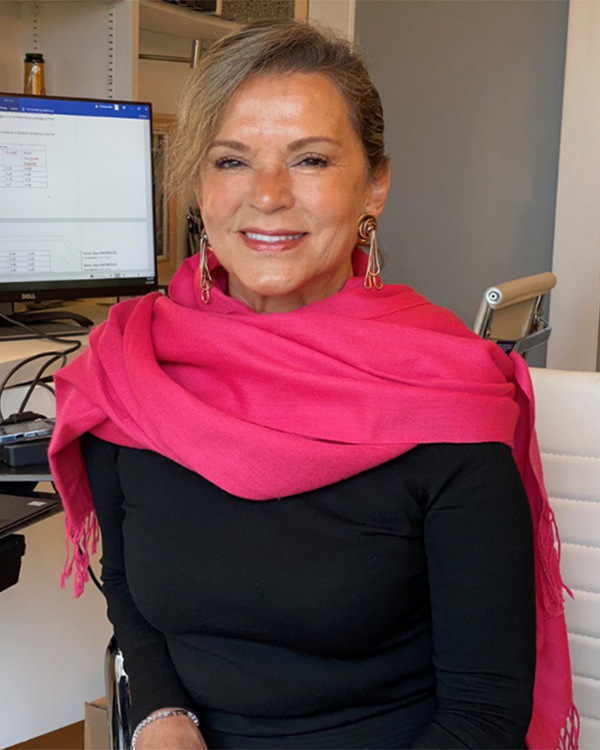
Dunstana R. Melo
Dr. Dunstana R. Melo was born and grew up in the beautiful city of Rio de Janeiro, Brazil. She earned her BS in biology and her MS and PhD in biophysics from the Federal University of Rio de Janeiro. However, the experimental part of her PhD thesis was conducted at the Inhalation Toxicology Research Institute, which was a Department of Energy laboratory at that time. She immigrated to the United States in July 2006.
An active member of the Health Physics Society (HPS) since 1990, Dunstana is an internationally recognized expert in the health physics field, with her core expertise in radiation dosimetry and radiation protection, biokinetics, and biological effects of internally deposited radionuclides. She has authored and coauthored more than 90 peer-reviewed scientific publications, many of which are published in Health Physics.
Dunstana started her scientific career at the Institute of Radiation Protection and Dosimetry (IRD) of the Brazilian National Nuclear Energy Commission (CNEN) in Rio de Janeiro. She recognizes that it was a great opportunity for her to form, develop, and enrich her knowledge of radiation dosimetry during 30 years of work at IRD. She served as head of the IRD’s Division on Internal Monitoring (in-vitro bioassay, in-vivo bioassay, aerosol characterization, radiation dose assessment). Her unique experience includes serving as a radiation dosimetrist during the 1987 cesium-137 (137Cs) incident in Goiania, Brazil. This unique event resulted in internal and external 137Cs exposure of the local population. Dunstana was “on the ground” and intensively involved in the triage of the exposed population. She applied individual monitoring methodologies including the evaluation of the efficacy of Prussian blue (PB) therapy. This PB therapy is important in the enhancement of the elimination of cesium from the body. She also developed age-specific biokinetic models for cesium, with and without the mechanism of action of PB. Dunstana received the esteemed Merit Honor Award from the CNEN in 2002, which recognized her outstanding scientific and leadership contributions during her career at the IRD.
In 2006, Dunstana came to the United States through special invitation to join the Radiation Epidemiology Branch of the National Cancer Institute (NCI) as part of the dosimetry group. She led several projects, including dose reconstruction for patients treated with iodine-131 for hyperthyroidism as well as dose reconstruction for US patients who had undergone x-ray diagnostic procedures or nuclear medicine diagnostic and therapeutic procedures. Dunstana was also part of the NCI’s scientific team that carried out the dose reconstruction of the Marshall Island population due to the nuclear tests conducted in the 1950s. Recently, as a senior-level consultant, Dunstana also participated in the dose reconstruction of the population of New Mexico exposed to the Trinity Test conducted in 1945. In January 2021, the NCI Team involved in the Trinity study received the 2020 Director’s Scientific Award from the NCI Division of Cancer Epidemiology and Genetics.
In 2011, Dunstana joined the Lovelace Respiratory Research Institute (LRRI) in Albuquerque, New Mexico, as a designated director of the Center for Countermeasures Against Radiation and became overall director in 2013. At LRRI, Dunstana led the scientific studies of the radiation program developing medical countermeasures to mitigate radiation health effects, providing services to the National Institute of Allergy and Infectious Diseases, Biomedical Advanced Research and Development Authority, and various pharmaceutical companies, more specifically testing the efficacy of the drugs to mitigate radiation health effects.
Dunstana also has an impressive record of public service in the scientific field. She has reviewed numerous papers for journals, including Health Physics, Radiation Research, International Journal of Radiation Biology, Radiation Protection and Dosimetry, and Physics in Medicine and Biology. In addition, she has served on numerous international and national scientific committees, including the National Council on Radiation Protection and Measurements (NCRP) as a member of the Scientific Committee 6-3, which was responsible for NCRP Report No. 164, Uncertainties in Internal Radiation Dose Assessment. She was a key member of the United Nations Scientific Committee on Effects of Atomic Radiation (UNSCEAR), as member of the Brazilian delegation from 2000 to 2006 and serving as the lead representative of the delegation from 2005 to 2006 and from 2011 to 2012. She has served as a consultant from 2002 to 2010 and since 2015 to assist in development of an UNSCEAR report on occupational radiation exposure. She provided special expert consulting for UNSCEAR on assessment of worker doses following the Fukushima Daiichi nuclear accident (2011–2013).
Dunstana has served on the International Commission on Radiological Protection as a member of the Human Alimentary Tract Model Task Group from 2000 to 2006, as a member of the Internal Dose Coefficients Task Group 95 (former INDOS Task Group) 2006 to present, and as a member of the Emergency Dosimetry Task Group 112 (2020 to present). She has served as a consultant for several International Atomic Energy Agency (IAEA) reports and she developed IAEA-TECDOC-1009 Dosimetric and Medical Aspects of the Radiological Accident in Goiânia in 1987, which was published in 1998. She was a key woman representative member of the IAEA consultant group on the development of standards of protection for pregnant workers and their offspring from 2005 to 2013. She coordinated the IAEA/ARCAL project Harmonization of Internal Dosimetry Procedures in Latin America from 2003 to 2009. She also coordinated the IAEA project on Improvement of Dosimetry Service Capability for Nuclear and Radiological Emergencies from 2003 to 2006.
Dunstana founded Melohill Technology Inc. in 2015 and is the president and chief scientist. Melohill Technology’s mission is to improve public health by providing industry-leading biomedical research and consulting services including radiation dose assessment, medical countermeasures to mitigate radiation health effects, and guidance for radiation emergency response. The Melohill team is made up of internationally recognized scientists with proven capabilities in assessing radiation dose for workers, members of the public, and patients and treating radiation contamination and its health effects. Their extensive scientific experience uniquely positions the company to provide industry-leading services in radiation dosimetry and develop software applying cutting-edge biokinetic and dosimetric methodologies for emergency response and in routine applications.
Dunstana appreciates the challenges and accomplishments during her successful career as a woman and bioscientist in the exciting field of radiation protection. She also recognizes that she can inspire other young women as well as aspiring scientists to succeed in this important career opportunity. Dunstana’s impressive contributions to the field are exceptional and we are proud to have an inspirational HPS member like her working among us!
Jillian Newmyer
Interview by Sara Dumit

Jillian Newmyer
Jillian Newmyer is a PhD candidate in radiation health physics at Oregon State University. She is expected to graduate in 2024. Her current research deals with the uptake mechanisms of radionuclides in medicinal plant species around former uranium mines and the subsequent dose from ingestion and dermal exposure using traditional medicinal preparation from Native communities. She holds a BS in nuclear engineering with a minor in physics from the University of Tennessee, Knoxville. She is currently the co-vice chair of the Student Support Committee of the Health Physics Society (HPS) and is a member of the HPS Membership Committee.
The recipient of the prestigious 2022 J. Newell Stannard Memorial Fellowship of the HPS, Jillian said: “Receiving this fellowship meant that I was able to continue my studies and shows that the work I do is valued across the health physics field. It shows that the HPS values student success and involvement within the Society. I want to thank my family and my advisor for their endless support during this journey. I hope to continue doing research after graduation and continue being involved in HPS.”
She is passionate about environmental justice and nuclear science communication. A fun fact about Jillian is that she is a Science Communication Fellow with the Oregon Museum of Science and Industry and is working to turn her research into an outreach project! Besides school, Jillian enjoys hiking around Oregon, playing board games with her friends, and reading the next sci-fi or horror novel.
Huitzilin Ortiz
Interview by Eric Goldin

Huitzilin Ortiz
Huitzilin Ortiz, a teacher at Pathways High School in Milwaukee, Wisconsin, received the Health Physics Society (HPS) 2022 Geoffrey G. Eichholz Outstanding Science Teacher Award. Huitzilin earned a BS in microbiology from Colorado State University, and after a few years as a benchtop chemist, she decided to transition her career to education in 2014. Because of a shortage of high school science teachers, she took on the commendable challenge of becoming a certified teacher through an on-the-job training program at the Northwest Passage High School in Coon Rapids, Minnesota, where she taught chemistry and physics. In addition, she served as an expeditions instructor in canoeing (the Northwest Passage High School is a public charter school that uses nontraditional classroom environments help students engage with scientific course material through nature/the outdoors). During her time at Northwest Passage High School, she developed project-based curriculum and presented this work at a conference of the Minnesota Association of Alternative Programs. Project-based learning has since become part of the core of the Northwest Passage High School’s mission. Huitzilin first developed an interest in developing demonstrations about radiological science and created lessons on half-life and radiation detection with simple Geiger counters.
In 2017, Huitzilin began a PhD program in STEM Curriculum and Instruction at the University of Minnesota-Twin Cities. For the 2018–2019 school year, she transitioned to serving as an instructor in the university’s TRiO program, which is a federally funded program aimed at retaining students from disadvantaged backgrounds. In August 2019, Huitzilin transferred to the graduate program at the University of Arizona, where she is currently a PhD candidate, and was awarded an MA in teaching and teacher education in 2021. During her time at the University of Arizona, she was named a Project Fellow for the Sustainable Bioeconomies for Arid Regions program and an Erasmus Circle Scholar. She also served as an instructor for the course “Science Concepts and Practices in the Elementary and Middle School Curriculum.”
From July 2020 to May 2022, Huitzilin was employed by the Tucson High Magnet School, teaching college preparatory and honors chemistry. While working in Tucson classrooms, she quickly saw the value of teaching radiological science to a group of students living in an area historically impacted by the uranium mining industry. She implemented a unit in nuclear energy from a holistic perspective. Because of the sensitive cultural attitudes toward the uranium industry in the area, her unit integrated ethics with frank and honest discussions of the history of the uranium mining industry in the southwestern United States, but the discussions were scaffolded with sound scientific lessons about the uranium fuel cycle, environmental benefits of nuclear power, and general radiological science. Her aim was to help her students understand a more well-rounded view of nuclear power and possibly even encourage her students to consider careers in radiological science and health physics, as Latino and indigenous students are underrepresented in these fields. Huitzilin presented this work at the 2021 HPS Annual Meeting in Phoenix, Arizona, under the title “Leveraging State Standards to Embed Science Ethics Education in High School Curricula.”
In addition to her specific work with radiological science, Huitzilin has used her experience with limited budgetary resources (having had the experience of teaching high school chemistry with only one set of glassware, for example) to develop affordable science experiment lesson plans for teachers. She has presented her work on this to the Minnesota Association of Alternative Programs conference (“The Adaptable Lab: Approaches to Chemistry Education With Limited Resources”) and the Hoosier Association of Science Teachers Conference (“Accessible Analysis: Colorimetry for All”). She has already begun the process of developing a course module for Pathways High School on radiation protection with hopes of publishing an article about her curriculum in the Operational Radiation Safety supplement to Health Physics. Pathways High is a school where 60% of the students meet the requirements for free or reduced lunches, and as such, the award associated with the Geoffrey G. Eichholz Outstanding Science Teacher Award could go a long way in helping provide resources so she can implement this program.
Huitzilin is a stalwart promoter of accurate and engaging radiological science curriculum at the high school level. She is a talented teacher who makes a difference in the lives of many of the students lucky enough to enter her classroom.
Julianne Pollard-Larkin
Interview by Sidni M. Moore, National Institutes of Health
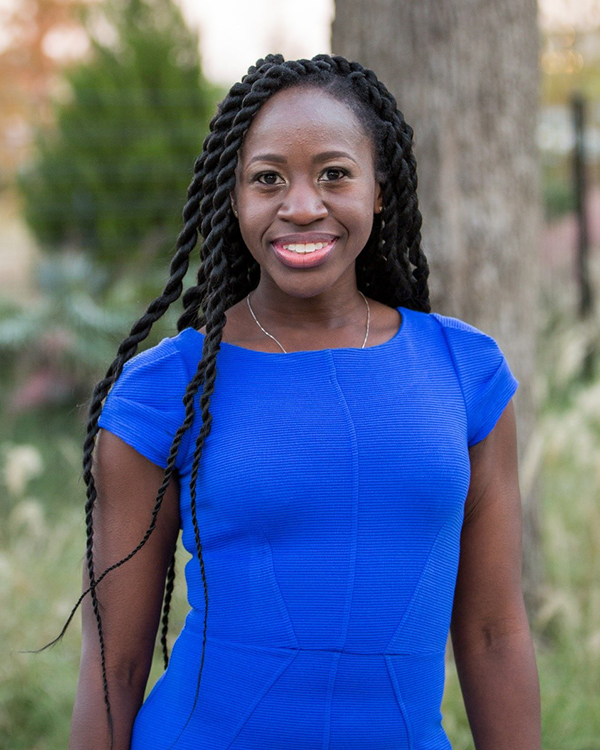
Julianne Pollard-Larkin
i became more sensible
and decided i would
settle down
and just become
a sweet inspiration
This excerpt from Nikki Giovanni’s poem “Dream” embodies Dr. Julianne Pollard-Larkin’s effortless passion and dedication to medical physics and minority progression. I had the opportunity to speak to Julianne in December of 2020, and it was clear through our discussion that this was a woman of impressive stature. A woman who is a role model for women everywhere.
Julianne hails from the beachfront city of Miami, Florida. Born to parents who were educators and, specifically, a father who served as a colonel in the US military, Julianne’s family support encouraged her to pursue a degree in physics from the University of Miami (UM). Her exposure to medical physics started when her mother was diagnosed with breast cancer during Julianne’s junior year at UM. Seeing her mother undergo breast cancer treatments and watching the doctors—not the kind of doctors usually seen in most medical visits—sparked her interest in medical physics. “Seeing the dedication in their eyes to help my mother ignited in me that I wanted to do the same for others in the same capacity,” Julianne said. This was the driving force that led her to leave the “Magic City” and set her sights on the “City of Angels,” Los Angeles, California. At the University of California, Los Angeles (UCLA) Julianne earned her masters and doctoral degrees in biomedical physics. She was the first African American woman to earn her doctoral degree at UCLA.
While attending UCLA, Julianne’s dedication to public service and minority progression became an avenue to bring more minority students into STEM-degree fields. Specifically, she participated in the Whiz Kid Outreach Program within the UCLA medical physics program, which helps sponsor several events each year with Girls Inc., Girl Scouts, and the Girls Empowerment Network. Moreover, she became a cochair for the STEM Alliance for Graduate Education and the Professoriate (AGEP) at UCLA. Julianne was dedicated not only to her studies, but also to ensuring the pathway for other minority students was accessible by becoming a physics instructor for the Center for Excellence in Engineering and Diversity (CEED).
After graduating from UCLA with her PhD, Julianne set her sights on working at the University of Texas MD Anderson Cancer Center as a clinical resident. While a resident, Julianne worked tirelessly to spread the message of diversity. She became part of several committees focused on increasing gender inclusiveness, diversity, and minority progression. Ever shattering glass ceilings, Julianne went on to become the first African American woman to become a radiation physics faculty member at MD Anderson, and she continues to pave the way for minority women.
Julianne wants others to understand that it takes a special person to pursue their dreams. “Identify your passion … identify your why,” she said. “When you understand why … [everything] will fall into place. [Basically], do not find a field … find it uniquely to you. To be a medical physicist, it takes a person to be doing a life-saving cancer procedure on December 24th, while everyone is at home celebrating the coming of Christmas. It takes you being at work for long hours, because you are passionate about your career and others.” The encouraging spirit of Julianne and her unwavering commitment to diversity and inclusion demonstrates that no dream is too big to achieve. Julianne is one of the most inspirational individuals in medical physics, and she inspires future generations to achieve their dreams as well.
in my younger years
before i learned
black people aren’t
suppose to dream
i wanted to be
a raelet
and say “dr o wn d in my youn tears”
or “tal kin bout tal kin bout”
or marjorie hendricks and grind
all up against the mic
and scream
“baaaaaby nightandday
baaaaaby nightandday”
then as i grew and matured
i became more sensible
and decided i would
settle down
and just become
a sweet inspiration
–Excerpt from “Dreams” by Nikki Giovanni, 1968
Want to learn more about Dr. Julianne Pollard-Larkin? Check out Who Is Radiation Physicist Julianne Pollard-Larkin? on the MD Anderson website.
Geena Quiñones
Interview by Sara Dumit
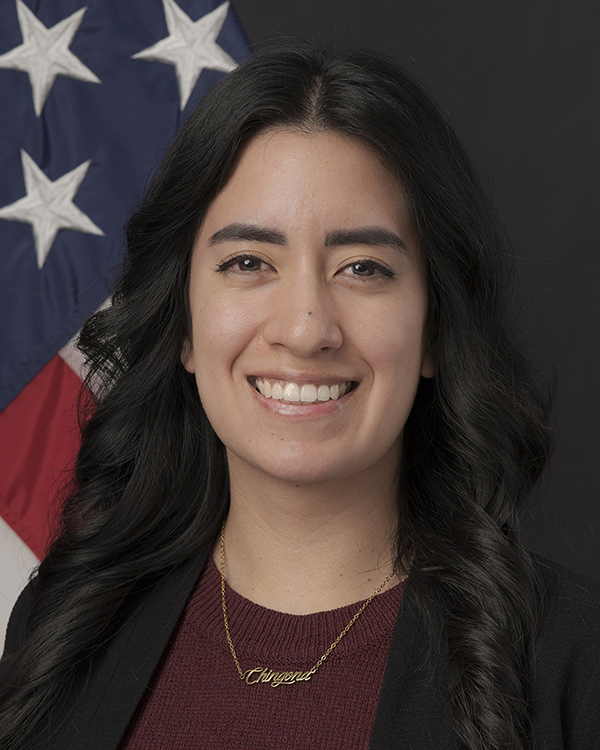
Geena Quiñones
Geena Quiñones graduated from Oregon State University with a bachelor’s degree in radiation health physics in 2017 and received her master’s degree in nuclear and mechanical engineering in 2022 from Virginia Commonwealth University. At Oregon State, she originally started in nuclear engineering, but after her first semester switched to radiation health physics and never looked back. When asked why she switched, she immediately answered: “Once I had completed my first class in radiation biology, I was sold on the career path! I became extremely passionate and involved in the field and never deviated from it for the duration of my undergraduate experience.”
After graduating with her engineering degree from Oregon State, she started her career in the nuclear Navy at Newport News Shipbuilding (NNS) in Newport News, Virginia. While working for NNS, Geena was provided the opportunity to work in a number of different fields, the first of which was providing deck plate engineering support aboard nuclear aircraft carriers and submarines. She then switched roles and completed a few years as a nuclear test engineer where she was able to play a more hands-on role in the testing and maintenance performance of reactors. Geena’s final spot at NNS was involved with the radiation health physics group in the radiological engineering department. In this position, she helped lead the shipyard’s radiological environmental monitoring program. This included coordinating multiple efforts for the sampling process of air, water, soil, harbor water, and marine life analysis. This type of work put her directly back into the field that she had grown so passionate about, radiation biology. Geena thoroughly enjoyed her time in that final role with NSS.
After five and a half years with the nuclear Navy, Geena took the jump to government service with the Department of Defense. She started the next phase of her career with the Defense Threat Reduction Agency (DTRA) at the end of 2022 and has once again become completely enamored with her role and responsibilities. Geena’s current title is alternate radiation safety officer, and she assists in the training, execution, and process development of DTRA’s Radiation Safety Program (RSP). The RSP works to ensure our US and allied nation warfighters have timely and real radiological training prior to active deployment.
Geena is a member of the Public Information Committee of the Health Physics Society (HPS) and volunteers in a variety of tasks, including helping with the management of the social media channels of the HPS. Geena says: “The opportunity to give back to the field by volunteering for the HPS has been a rewarding experience! It’s granted me the opportunity to connect with a wonderful group of people and help in a way as to inform others of a great Society!”
In the next five years, Geena plans to obtain her health physics certification (CHP) and continue to help develop and improve the RSP at DTRA. Geena said her current hobbies involve “typical millennial things like watching a number of shows on various streaming services, finding the next coolest brewery with my partner, reading about nuclear history, and enjoying the super vibrant city I currently live in: Washington, DC!”
Lily Ranjbar
Interview by Sara Dumit
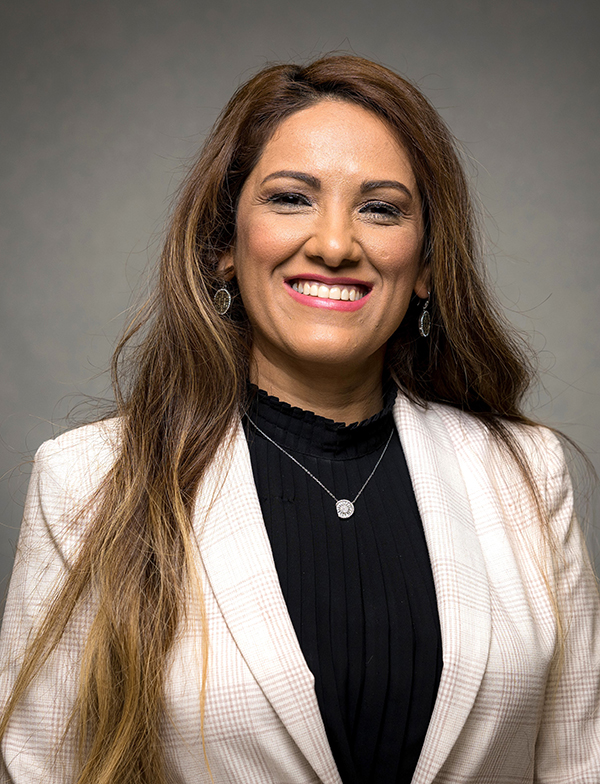
Lily Ranjbar
Dr. Lily Ranjbar is the director of online programs at the School of Nuclear Science and Engineering (NSE) at Oregon State University (OSU). She oversees the largest online graduate program in radiation health physics in the United States while also teaching radiation health physics and nuclear engineering courses to both on-campus and Ecampus students. Her research focuses on nuclear detection infrastructure for homeland security, nuclear nonproliferation, cybersecurity for nuclear infrastructure, and online education in STEM fields.
Apart from her current positions at the NSE, Lily is also a member of the Health Physics Program Directors Committee, the OSU Faculty Senate Graduate Admissions Committee, the OSU Graduate Students Award Review Team, the NSE Graduate Committee, and the OSU Engineering+ Standing Committee. She is a trained mentor and strongly believes in integrating DEI (diversity, equity, and inclusion) topics into the classroom. Lily is also an advocate for immigrant communities and contributes to the Migrant Engineering Institute, which serves students from seasonal and migrant farm-working families. Lily has received several awards, including the 2023 College of Engineering Faculty Excellence in Online Teaching Award and the Diversity Grant from the Institute of Nuclear Materials Management.
Caleigh Samuels
Interview by Sara Dumit

Caleigh Samuels
Dr. Caleigh Samuels is the radiation dosimetry lead in the Center for Radiation Protection Knowledge at Oak Ridge National Laboratory. Her research in radiation dosimetry includes element-specific biokinetic model development, Monte Carlo applications in dosimetric and detector response modeling, development of radiological risk assessment tools, and dose reconstruction for internal emitters. Current focuses are on formulating models and methods to estimate organ doses from internal emitters for epidemiological studies of radiation workers, developing radiogenic cancer risk coefficients for public exposures, and simulating public and worker radiation doses associated with the detonation of nuclear explosive devices. Caleigh received her PhD in nuclear engineering and MS in medical physics from Georgia Institute of Technology and her BS in physics from Radford University. She is currently a member of International Commission on Radiological Protection Task Group 95 on Internal Dose Coefficients and of National Council on Radiation Protection and Measurements SC 6-13 on Methods and Models for Estimating Organ Doses from Intakes of Radium. She has been collaborating on the Million Person Study for over 4 years.
Lotem Buchbinder Shadur
Interview by Sara Dumit
Lotem Buchbinder Shadur
Dr. Lotem Buchbinder Shadur is a dedicated post-doctoral researcher at the RED² Laboratory at Georgia Tech, where she focuses on understanding how internal exposure to radionuclides affects both humans and animals. Her research involves creating biokinetic models to predict how these substances behave in the body, taking into account various factors like age, gender, and health status. This work helps improve the accuracy of dose reconstructions for internal exposure, which is vital for health assessments and safety protocols.
Lotem is also exploring how new chelation agents—substances that help remove heavy metals from the body—perform before and after they are administered. By collaborating with peers and leveraging previous research, she aims to enhance the tools available for managing internal exposure to these agents in emergency events.
Lotem actively mentors and teaches graduate and undergraduate students in a wide range of subjects related to internal dosimetry and radiation protection, with applications in both fission and fusion contexts. Her guidance helps cultivate the next generation of professionals in the field.
Before joining RED², Lotem earned her PhD from the Technion, Israel Institute of Technology. Her doctoral research revolved around innovative techniques in retrospective dosimetry, specifically using advanced pulsed electron spin resonance (ESR) to analyze radiation damage in tooth enamel. This work showcased the potential to develop an in-vivo device for estimating radiation doses after exposure, which could be crucial in radiological emergencies.
Her academic journey began with a bachelor’s degree in chemistry (BSc) and material engineering (BSc), followed by a master’s in material science and engineering (MSc), where she specialized in creating hybrid electrochromic materials for her thesis. Lotem’s diverse background and commitment to safety in radiation exposure make her an influential figure in her field.
Posted 25 March 2025
Brooke Stagich
Brooke Stagich
Brooke Stagich and Tim Jannik
Brooke Stagich is an environmental health physicist at the Savannah River National Laboratory (SRNL), where she focuses on environmental surveillance, risk, and public dose. Currently, she leads the SRNL’s Environmental Dosimetry program, where she was an intern from 2015 to 2019. During this time, she earned a BS in chemistry with a concentration in nuclear science from Augusta University (AU) and an MS in environmental health physics from Clemson University (CU).
Brooke is an avid supporter of the Workforce Opportunities in Regional Careers (WORC) program, a community-based grant program focused on providing opportunities relevant to careers in Department of Energy-Environmental Management and National Nuclear Security Administration missions. It was this program that allowed her the opportunity to intern with SRNL, and in more recent years, become a mentor to others. In 2024, she was named the Outstanding Young Alumni for AU’s College of Science and Math in recognition of her contributions to the university’s core values and to her chosen career field, service in the community, and engagement with her alma mater.
Since joining the Health Physics Society, Brooke has served as a board member for the Environmental/Radon Section (2021–2024) and is a current member of the Professional and Ethical Conduct Committee. She attributes both her introduction to the health physics career and her involvement in HPS to her mentor, Tim Jannik, and his guidance. Recognizing the quality of mentoring she received from Jannik, as well as her AU advisor (Dr. Joseph Newton) and her CU advisor (Dr. Nicole Martinez), she aims to provide similar opportunities and mentoring to future students and graduates, especially in her local community.
Posted 19 March 2025

